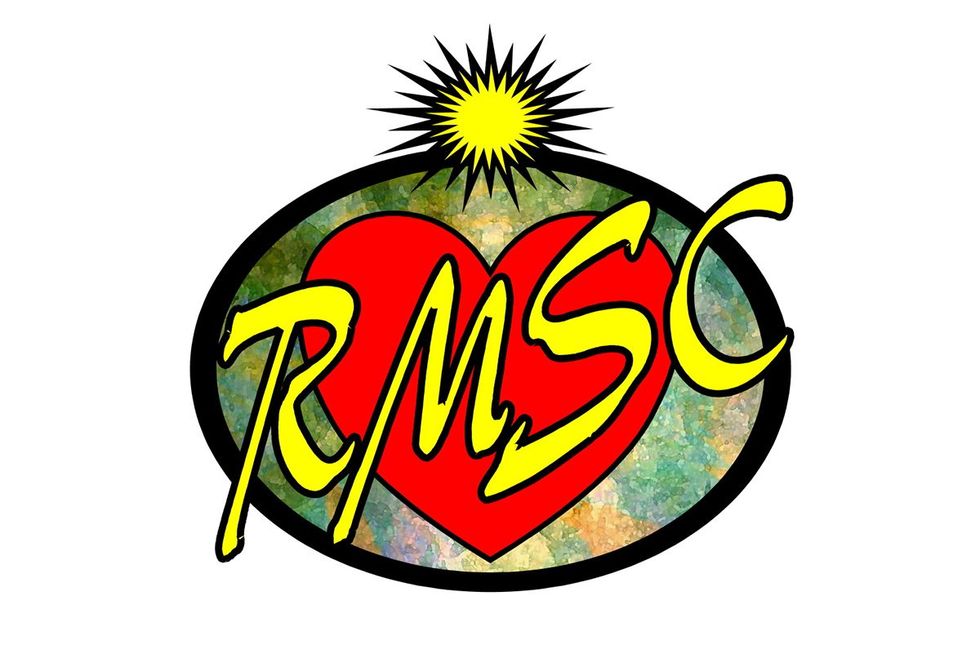Music is the universal language
“Glory to God in the highest heaven, and on earth peace to those on whom his favor rests.” - Luke 2:14
Premier Guitar
He’s Worked with Taylor Swift and Michael Jackson. Now, Dann Huff Steps Out on His Own.
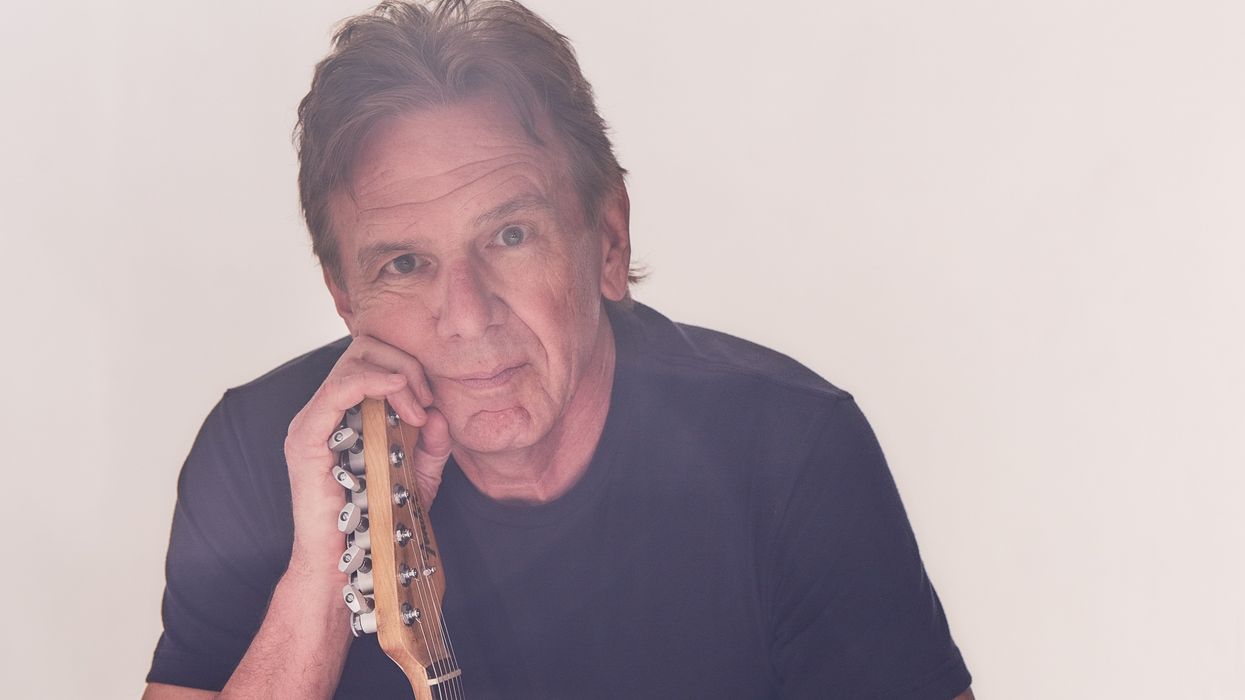
You wouldn’t expect Dann Huff, one of the most renowned studio guitarists, to feel nervous sharing his debut solo LP with a friend. But when that friend happens to be Toto’s Steve Lukather, a permanent fixture on the Mount Rushmore of L.A. session players, it’s easy to understand the butterflies.
“He said, ‘I want to hear your record,’” recalls Huff, 64, with a laugh, detailing the creation of the colorful and lovingly arranged When Words Aren’t Enough. “I said, ‘Sure, I’ll send it to you.’ Then as soon as I pressed send, I went into this almost-fetal position mentally. I thought, ‘I just sent it to one of the people I value so highly in my life.’ But it was great, the fact that I felt the fear.”
That story crystalizes the skills that propelled Huff to this moment: the confidence and curiosity it took to press that button, but also the humility it took to still feel those healthy nerves. After all, you have to be great—but also a flexible team player—to rack up the credits this guy has. And he’s had a career like few others in the business, both in the styles he’s explored and the roles he’s served: Huff rose up the ranks of the fertile ’80s session scene, where he recorded with everyone from Michael Jackson to Kenny Rogers, has played in both a contemporary Christian rock band (White Heart) and an AOR outfit (Giant), journeyed back to his hometown of Nashville and immersed himself in the pop-country world (Shania Twain, Faith Hill), ventured into marquee-level production work (most famously on Taylor Swift’s 2012 blockbuster, Red), and now—finally—released a fascinating album of his own.
Dann Huff’s Gear
Guitars
James Tyler Dann Huff Classic
1964 Fender Stratocaster
1959 Fender Custom Shop Stratocaster Reissue
Gibson Les Paul
Yamaha Classical Guitar (gut string)
Amps & Cabinets
REVV Dynamis D40 (40-Watt Tube Amp Head)
Matchless amps
Little Walter 2x12 Open Back Cabinet
Effects
Boss OS-2
Mr. Black SuperMoon
JAM Pedals Wahcko
“As soon as I pressed send, I went into this almost-fetal position mentally. I thought, ‘I just sent it to one of the people I value so highly in my life.’ But it was great, the fact that I felt the fear.”
When Words Aren’t Enough nods to so much of that range, moving from simmering dixie funk to cinematic orchestral rock to atmospheric and artful Americana. It sounds like the work of an artist stretching every single muscle yet never straining in the flex—a series of clean and jerks that sound awfully clean. But you can’t talk about this ambitious endeavor without exploring its true roots. “This project for me is basically a love letter to my emerging years, which is the late ’70s,” Huff says. “It’s everything that I built upon, everything that I love in guitar playing.”
The groundwork was laid when Huff was a kid. When he was around 10, his parents moved from the Chicago area to Nashville—with three sons and a whopping $800 to their name—as Dann’s dad, Ronn, pursued a career in orchestration. (“Man, he had some big cojones to do that!” Dann says, accurately.) The elder Huff’s career took off, and he found work with the Nashville Symphony, as well as occasionally in recording studios with rhythm sections. The latter intrigued his son, whose interest in the guitar started to grow around age 12. Dann had felt a sense of culture shock in Tennessee, but music became his guiding light. The more he glimpsed of his father’s work life, the clearer his path became. “My dad had a friend who was a session guitar player in Nashville named John Darnell, and he asked if [John] would come over and spend maybe 30 minutes to an hour with his 13-year-old son,” he recalls. “He came over one night, and I’ll never forget it. He taught me some scales and a couple chords. He kind of lit the fuse, and that was it.”
As an aspiring guitarist, the young Huff had the perfect entry point. His dad would offer to let him sit in the back of the room at the studio, where he’d meet “the cream of the crop” session players in Nashville—guitarists like Reggie Young, Pete Wade, and Dale Sellers. “To me, those were the rock stars,” he says. “You could go into a dark-lit studio, hear music for the first time, and make something new. I just thought that was the coolest thing. Why? I have no idea. There was no illusion that I wanted to go and be a rock star. Not even in the slightest, when I was a kid.”
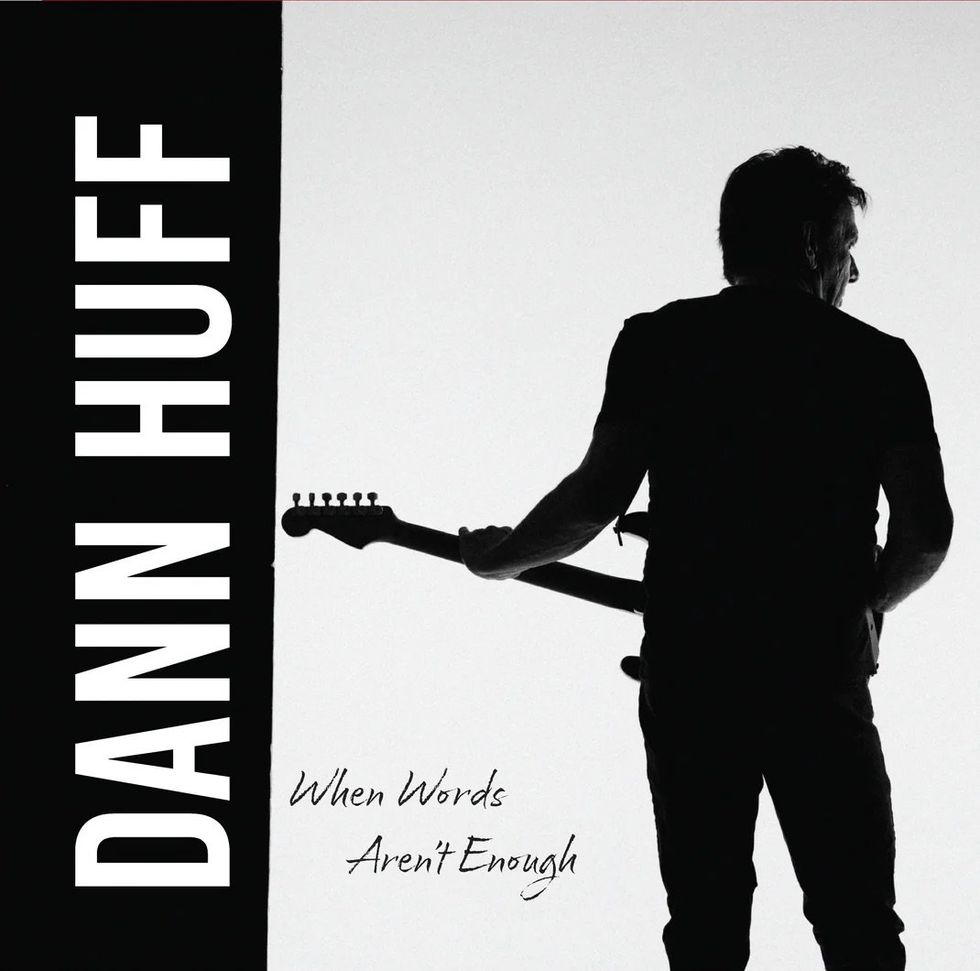
“This project is a love letter to my emerging years, which is the late ’70s. It’s everything that I built upon, everything that I love in guitar playing.”
As a high-schooler in the mid ’70s, after years of practicing his chops in the basement, that dream started to become real. He played on friends’ demos at the local Belmont University, and he soaked in torrents of incredible instrumental music of that era: Larry Carlton, Lee Ritenour, Jeff Beck’s Blow by Blow, and Al Di Meola’s Elegant Gypsy, as well as Steely Dan’s Aja. “The list could go on, but it was so diverse," he says. “I was inundated with all these different kinds of music, all the Motown stuff. Everything interested me. And all of the sudden I started seeing these West Coast session players.” After playing on an album by singer-songwriter Greg Guidry, he was directly connected to some of those musicians, including former Toto bassist David Hungate. He was eventually hired for an L.A. session with soul legend Lou Rawls, kicking off a period of frequent commuting.
“At the time, Steve Lukather had all but vacated his chokehold—he was simply just the very best—because he was becoming a rock star,” Huff says. “I started booking myself on sessions. Back in the early ’80s, they still used contractors for a lot of the pop sessions. I said, ‘Just book me like I live out here.’” He would go out for stretches at a time, making a name for himself in L.A., but realized that this process wasn’t sustainable: “I didn’t realize I could charge for my hotels, my rental cars,” he says. “I did my own cartage. If I booked a session, my expenses would usually surmount that by 100 percent. But I was smart enough to realize I was investing in something, and it became apparent over the course of a year that I couldn’t keep hopping on planes, playing on big records in L.A., and coming back to play on demos in Nashville.” Around age 21, he and his new wife hopped on a plane and headed west, starting the next chapter of his life.
The ’80s flew by in a stream of sessions: Michael Jackson’s Bad, Barbra Streisand’s Emotion, Chaka Khan’s I Feel for You, Bob Seger’s Like a Rock, Whitney Houston’s self-titled, Madonna’s True Blue—every situation was different, and the ever-curious Huff learned something from almost all of them. “It was one of those perfect storms,” he says of this prolific time. But after the unexpected success of Giant, his melodic rock band featuring his brother David on drums, following the release of their 1989 debut, Last of the Runaways, he decided to move his talents back to Nashville. “I felt I didn’t need to do my studio career anymore,” he recalls. “[My wife] and I had just had our first kid, a daughter, and we felt, ‘As long as I’m gonna be doing this rock thing,’ which I’d never dreamt of doing, ‘we might as well do it from the comfort of where the rest of our families are,’ so we moved back to Nashville and I left my studio career. We cut a second Giant record, and by that point, Nirvana and Pearl Jam were out, so say no more.” Rather than move back to Los Angeles, he quickly found a niche in the Nashville scene, particularly within the world of country-pop/rock, playing on a series of enormous records—including a pair of multi-platinum monsters by Shania Twain, 1995’s The Woman in Me and 1997’s Come on Over, both produced by the singer’s revered then-husband, Robert “Mutt” Lange.
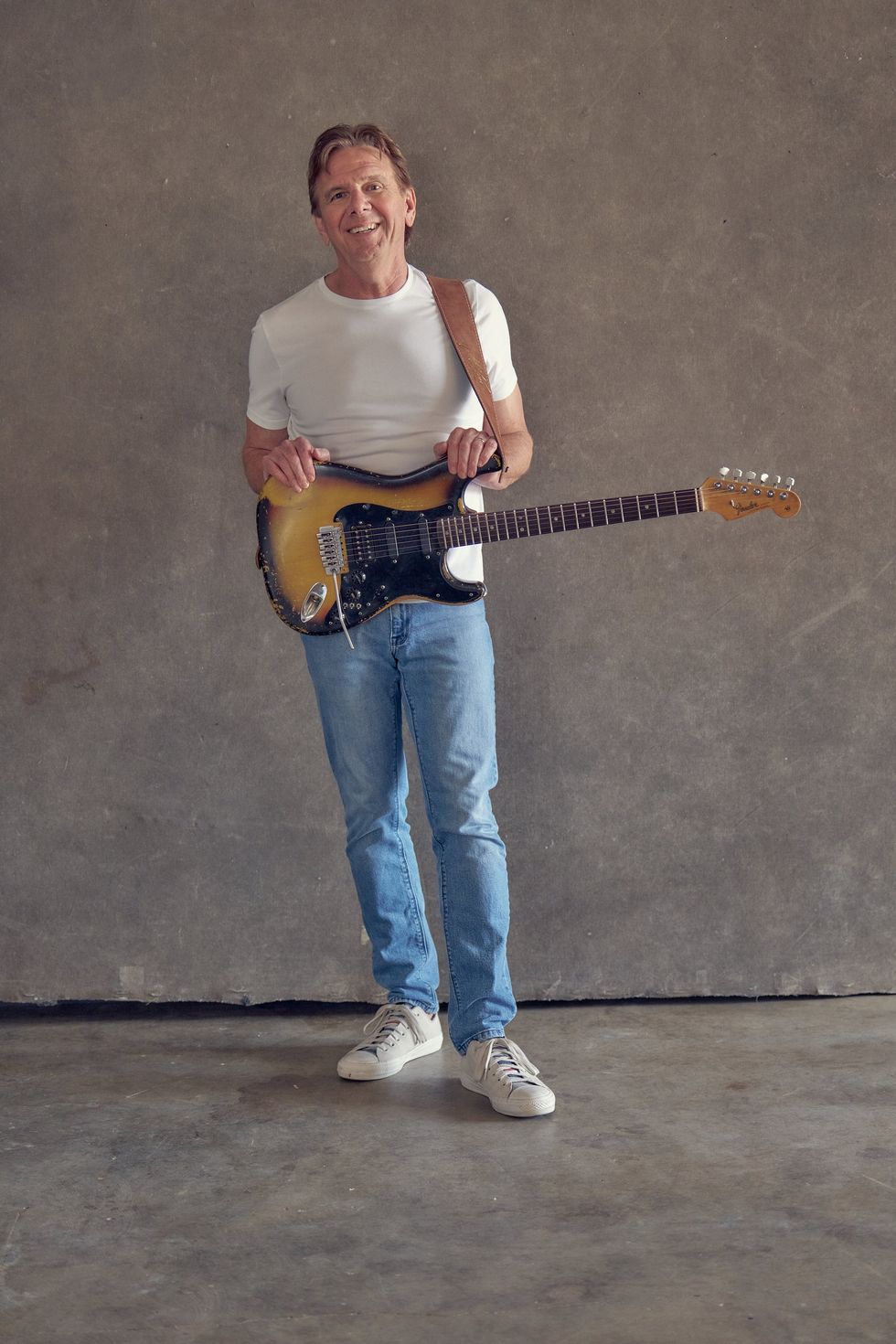
“I don’t have any illusions of what I can do on the guitar, so I have to dig deep into what I actually have roots in.”
Huff was once again ingrained in the session world—just a very different one—but Lange noticed his potential in another field. "I didn’t get into producing records because I wanted to," Huff admits. "I was lured into it, or encouraged into it, mainly by Mutt Lange. He sensed that the way I played studio guitar, I knew that it wasn’t about me. It’s about building something.” And that sense of songcraft, of having an eagle eye for arrangement and talent, served him well when he made that jump, working with artists like Swift, Rascal Flatts, and even Megadeth. It also wound up informing his first solo LP, When Words Aren’t Enough, which came about after some friendly prodding from fellow Nashville musicians Tom Bukovac and Mike Reid.
“Both challenged and embarrassed me: ‘Why don’t you play guitar anymore?’ ‘I play guitar on the records.’ ‘No, why don’t you play guitar?’” he says. “I didn’t have a good answer after saying no for dozens of years. I decided I would give it a rip. I wasn’t in tip-top form of guitar playing at this time, so it was humbling, but it felt right.” He gradually started putting together some demos, drawing on the pivotal period of teenage inspiration that first drew him to this wild life. “Runaway Gypsy” laces jazz-funk riffs with grooving Latin percussion and grand string parts—a cinematic stew that reflects the influence of Al Di Meola. The title of “Southern Synchronicity” is an overt nod to Police guitarist Andy Summers, but the song is way wilder than you’d expect, with shifting time signatures, funky drumming, and the fiery fiddle of Stuart Duncan. Meanwhile, the greasy “Colorado Creepin’” is a tightly coiled, wah-heavy highlight. (“You can probably hear a lot of my love of Jeff Beck,” notes Huff.) Every track—featuring the core of Huff, bassist Mark Hill, and drummer Jerry Roe—is virtuosic but tasteful, placing every show-stopping solo within the context of a hooky melody and satisfying musical arc.
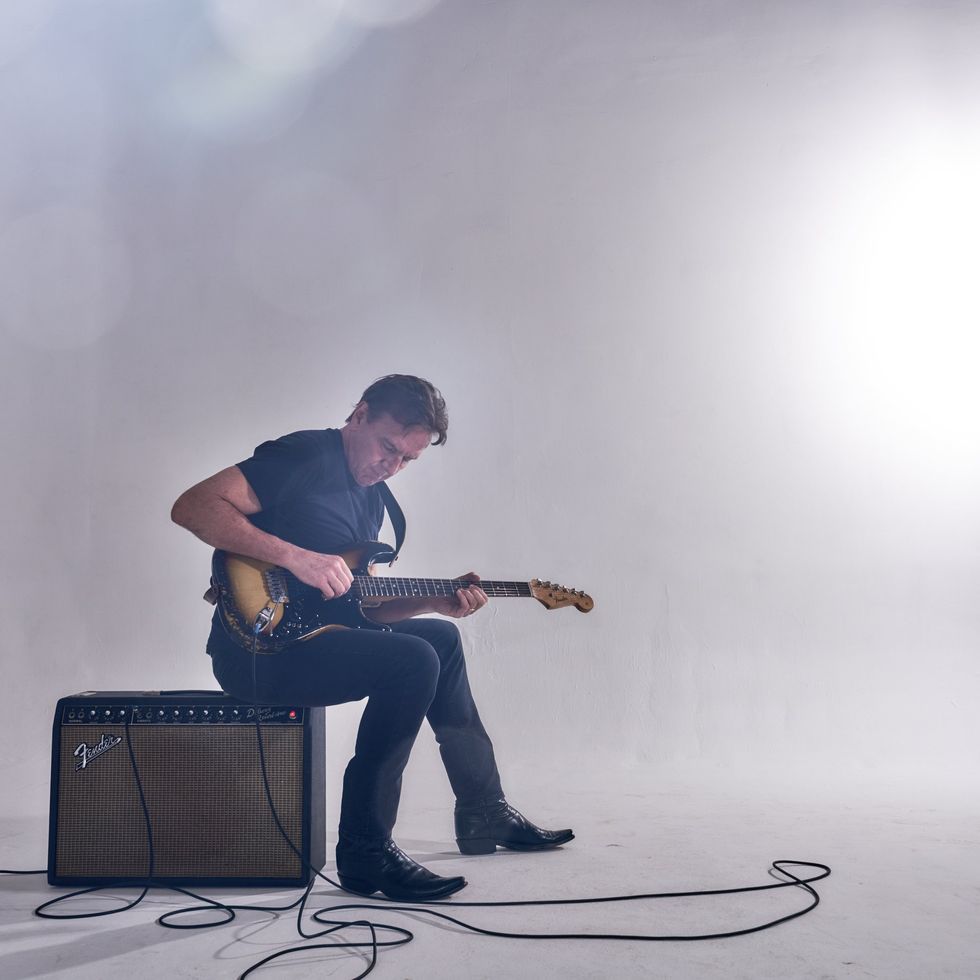
Often utilizing large chunks of his demos, they knocked out the bulk of basic recording in a couple days—and that no-nonsense approach fits for a guy who spent decades as a quick-on-his-feet hired gun. The process made Huff “fall in love again” with his Stratocaster, which he hadn’t played for years, but the recording was intentionally bare-bones. “It wasn’t about amplifiers or all the equipment,” he says. “I used very little equipment on the record. When you’re trying to say something, just say it how you’re gonna say it.
“The gift of being older and not being, shall we say, in my ‘prime form’—my chops aren’t as fluid as they were when I was playing 10 hours a day—is that I had to define what I was interested in before I did this,” he says. “And what I’ve always been drawn to in music—and I saw a connection here—is composition. When the shape, the form, the melody, the dynamics, are correct, that allows you to improvise over it in a way that isn’t gratuitous or about you trying to prove yourself. I don’t have any illusions of what I can do on the guitar, so I have to dig deep into what I actually have roots in.”
He also wound up enormously proud of the record—but that’s not to say he didn’t feel anxious about it, illustrated by his exchange with the great Lukather.
“I went through a period after I finished this thing where I was absolutely terrified,” he admits. “I guess anybody would. It’s hard to hear yourself from another perspective. I can listen to other guitar players or musicians, and I just want to hear who they are. I’m critical, but with my music, it’s like, I know where the warts are, and I hear the limitations. It’s hard to hear it for what it is, but I thought, ‘If I don’t let go of this thing and stop trying to impress myself or everybody else, I’m never gonna do this.’ So I said, ‘Fuck it. I’m gonna put it out.’ So I let go, and that was the best decision I could have made.”
YouTube It
In this two-and-a-half-hour video courtesy of Vertex Effects, Dann Huff does a deep dive on his most recognizable guitar parts over the decades.
He’s Worked with Taylor Swift and Michael Jackson. Now, Dann Huff Steps Out on His Own.

You wouldn’t expect Dann Huff, one of the most renowned studio guitarists, to feel nervous sharing his debut solo LP with a friend. But when that friend happens to be Toto’s Steve Lukather, a permanent fixture on the Mount Rushmore of L.A. session players, it’s easy to understand the butterflies.
“He said, ‘I want to hear your record,’” recalls Huff, 64, with a laugh, detailing the creation of the colorful and lovingly arranged When Words Aren’t Enough. “I said, ‘Sure, I’ll send it to you.’ Then as soon as I pressed send, I went into this almost-fetal position mentally. I thought, ‘I just sent it to one of the people I value so highly in my life.’ But it was great, the fact that I felt the fear.”
That story crystalizes the skills that propelled Huff to this moment: the confidence and curiosity it took to press that button, but also the humility it took to still feel those healthy nerves. After all, you have to be great—but also a flexible team player—to rack up the credits this guy has. And he’s had a career like few others in the business, both in the styles he’s explored and the roles he’s served: Huff rose up the ranks of the fertile ’80s session scene, where he recorded with everyone from Michael Jackson to Kenny Rogers, has played in both a contemporary Christian rock band (White Heart) and an AOR outfit (Giant), journeyed back to his hometown of Nashville and immersed himself in the pop-country world (Shania Twain, Faith Hill), ventured into marquee-level production work (most famously on Taylor Swift’s 2012 blockbuster, Red), and now—finally—released a fascinating album of his own.
Dann Huff’s Gear
Guitars
James Tyler Dann Huff Classic
1964 Fender Stratocaster
1959 Fender Custom Shop Stratocaster Reissue
Gibson Les Paul
Yamaha Classical Guitar (gut string)
Amps & Cabinets
REVV Dynamis D40 (40-Watt Tube Amp Head)
Matchless amps
Little Walter 2x12 Open Back Cabinet
Effects
Boss OS-2
Mr. Black SuperMoon
JAM Pedals Wahcko
“As soon as I pressed send, I went into this almost-fetal position mentally. I thought, ‘I just sent it to one of the people I value so highly in my life.’ But it was great, the fact that I felt the fear.”
When Words Aren’t Enough nods to so much of that range, moving from simmering dixie funk to cinematic orchestral rock to atmospheric and artful Americana. It sounds like the work of an artist stretching every single muscle yet never straining in the flex—a series of clean and jerks that sound awfully clean. But you can’t talk about this ambitious endeavor without exploring its true roots. “This project for me is basically a love letter to my emerging years, which is the late ’70s,” Huff says. “It’s everything that I built upon, everything that I love in guitar playing.”
The groundwork was laid when Huff was a kid. When he was around 10, his parents moved from the Chicago area to Nashville—with three sons and a whopping $800 to their name—as Dann’s dad, Ronn, pursued a career in orchestration. (“Man, he had some big cojones to do that!” Dann says, accurately.) The elder Huff’s career took off, and he found work with the Nashville Symphony, as well as occasionally in recording studios with rhythm sections. The latter intrigued his son, whose interest in the guitar started to grow around age 12. Dann had felt a sense of culture shock in Tennessee, but music became his guiding light. The more he glimpsed of his father’s work life, the clearer his path became. “My dad had a friend who was a session guitar player in Nashville named John Darnell, and he asked if [John] would come over and spend maybe 30 minutes to an hour with his 13-year-old son,” he recalls. “He came over one night, and I’ll never forget it. He taught me some scales and a couple chords. He kind of lit the fuse, and that was it.”
As an aspiring guitarist, the young Huff had the perfect entry point. His dad would offer to let him sit in the back of the room at the studio, where he’d meet “the cream of the crop” session players in Nashville—guitarists like Reggie Young, Pete Wade, and Dale Sellers. “To me, those were the rock stars,” he says. “You could go into a dark-lit studio, hear music for the first time, and make something new. I just thought that was the coolest thing. Why? I have no idea. There was no illusion that I wanted to go and be a rock star. Not even in the slightest, when I was a kid.”

“This project is a love letter to my emerging years, which is the late ’70s. It’s everything that I built upon, everything that I love in guitar playing.”
As a high-schooler in the mid ’70s, after years of practicing his chops in the basement, that dream started to become real. He played on friends’ demos at the local Belmont University, and he soaked in torrents of incredible instrumental music of that era: Larry Carlton, Lee Ritenour, Jeff Beck’s Blow by Blow, and Al Di Meola’s Elegant Gypsy, as well as Steely Dan’s Aja. “The list could go on, but it was so diverse," he says. “I was inundated with all these different kinds of music, all the Motown stuff. Everything interested me. And all of the sudden I started seeing these West Coast session players.” After playing on an album by singer-songwriter Greg Guidry, he was directly connected to some of those musicians, including former Toto bassist David Hungate. He was eventually hired for an L.A. session with soul legend Lou Rawls, kicking off a period of frequent commuting.
“At the time, Steve Lukather had all but vacated his chokehold—he was simply just the very best—because he was becoming a rock star,” Huff says. “I started booking myself on sessions. Back in the early ’80s, they still used contractors for a lot of the pop sessions. I said, ‘Just book me like I live out here.’” He would go out for stretches at a time, making a name for himself in L.A., but realized that this process wasn’t sustainable: “I didn’t realize I could charge for my hotels, my rental cars,” he says. “I did my own cartage. If I booked a session, my expenses would usually surmount that by 100 percent. But I was smart enough to realize I was investing in something, and it became apparent over the course of a year that I couldn’t keep hopping on planes, playing on big records in L.A., and coming back to play on demos in Nashville.” Around age 21, he and his new wife hopped on a plane and headed west, starting the next chapter of his life.
The ’80s flew by in a stream of sessions: Michael Jackson’s Bad, Barbra Streisand’s Emotion, Chaka Khan’s I Feel for You, Bob Seger’s Like a Rock, Whitney Houston’s self-titled, Madonna’s True Blue—every situation was different, and the ever-curious Huff learned something from almost all of them. “It was one of those perfect storms,” he says of this prolific time. But after the unexpected success of Giant, his melodic rock band featuring his brother David on drums, following the release of their 1989 debut, Last of the Runaways, he decided to move his talents back to Nashville. “I felt I didn’t need to do my studio career anymore,” he recalls. “[My wife] and I had just had our first kid, a daughter, and we felt, ‘As long as I’m gonna be doing this rock thing,’ which I’d never dreamt of doing, ‘we might as well do it from the comfort of where the rest of our families are,’ so we moved back to Nashville and I left my studio career. We cut a second Giant record, and by that point, Nirvana and Pearl Jam were out, so say no more.” Rather than move back to Los Angeles, he quickly found a niche in the Nashville scene, particularly within the world of country-pop/rock, playing on a series of enormous records—including a pair of multi-platinum monsters by Shania Twain, 1995’s The Woman in Me and 1997’s Come on Over, both produced by the singer’s revered then-husband, Robert “Mutt” Lange.

“I don’t have any illusions of what I can do on the guitar, so I have to dig deep into what I actually have roots in.”
Huff was once again ingrained in the session world—just a very different one—but Lange noticed his potential in another field. "I didn’t get into producing records because I wanted to," Huff admits. "I was lured into it, or encouraged into it, mainly by Mutt Lange. He sensed that the way I played studio guitar, I knew that it wasn’t about me. It’s about building something.” And that sense of songcraft, of having an eagle eye for arrangement and talent, served him well when he made that jump, working with artists like Swift, Rascal Flatts, and even Megadeth. It also wound up informing his first solo LP, When Words Aren’t Enough, which came about after some friendly prodding from fellow Nashville musicians Tom Bukovac and Mike Reid.
“Both challenged and embarrassed me: ‘Why don’t you play guitar anymore?’ ‘I play guitar on the records.’ ‘No, why don’t you play guitar?’” he says. “I didn’t have a good answer after saying no for dozens of years. I decided I would give it a rip. I wasn’t in tip-top form of guitar playing at this time, so it was humbling, but it felt right.” He gradually started putting together some demos, drawing on the pivotal period of teenage inspiration that first drew him to this wild life. “Runaway Gypsy” laces jazz-funk riffs with grooving Latin percussion and grand string parts—a cinematic stew that reflects the influence of Al Di Meola. The title of “Southern Synchronicity” is an overt nod to Police guitarist Andy Summers, but the song is way wilder than you’d expect, with shifting time signatures, funky drumming, and the fiery fiddle of Stuart Duncan. Meanwhile, the greasy “Colorado Creepin’” is a tightly coiled, wah-heavy highlight. (“You can probably hear a lot of my love of Jeff Beck,” notes Huff.) Every track—featuring the core of Huff, bassist Mark Hill, and drummer Jerry Roe—is virtuosic but tasteful, placing every show-stopping solo within the context of a hooky melody and satisfying musical arc.

Often utilizing large chunks of his demos, they knocked out the bulk of basic recording in a couple days—and that no-nonsense approach fits for a guy who spent decades as a quick-on-his-feet hired gun. The process made Huff “fall in love again” with his Stratocaster, which he hadn’t played for years, but the recording was intentionally bare-bones. “It wasn’t about amplifiers or all the equipment,” he says. “I used very little equipment on the record. When you’re trying to say something, just say it how you’re gonna say it.
“The gift of being older and not being, shall we say, in my ‘prime form’—my chops aren’t as fluid as they were when I was playing 10 hours a day—is that I had to define what I was interested in before I did this,” he says. “And what I’ve always been drawn to in music—and I saw a connection here—is composition. When the shape, the form, the melody, the dynamics, are correct, that allows you to improvise over it in a way that isn’t gratuitous or about you trying to prove yourself. I don’t have any illusions of what I can do on the guitar, so I have to dig deep into what I actually have roots in.”
He also wound up enormously proud of the record—but that’s not to say he didn’t feel anxious about it, illustrated by his exchange with the great Lukather.
“I went through a period after I finished this thing where I was absolutely terrified,” he admits. “I guess anybody would. It’s hard to hear yourself from another perspective. I can listen to other guitar players or musicians, and I just want to hear who they are. I’m critical, but with my music, it’s like, I know where the warts are, and I hear the limitations. It’s hard to hear it for what it is, but I thought, ‘If I don’t let go of this thing and stop trying to impress myself or everybody else, I’m never gonna do this.’ So I said, ‘Fuck it. I’m gonna put it out.’ So I let go, and that was the best decision I could have made.”
YouTube It
In this two-and-a-half-hour video courtesy of Vertex Effects, Dann Huff does a deep dive on his most recognizable guitar parts over the decades.
Fender Player II Modified Stratocaster Review
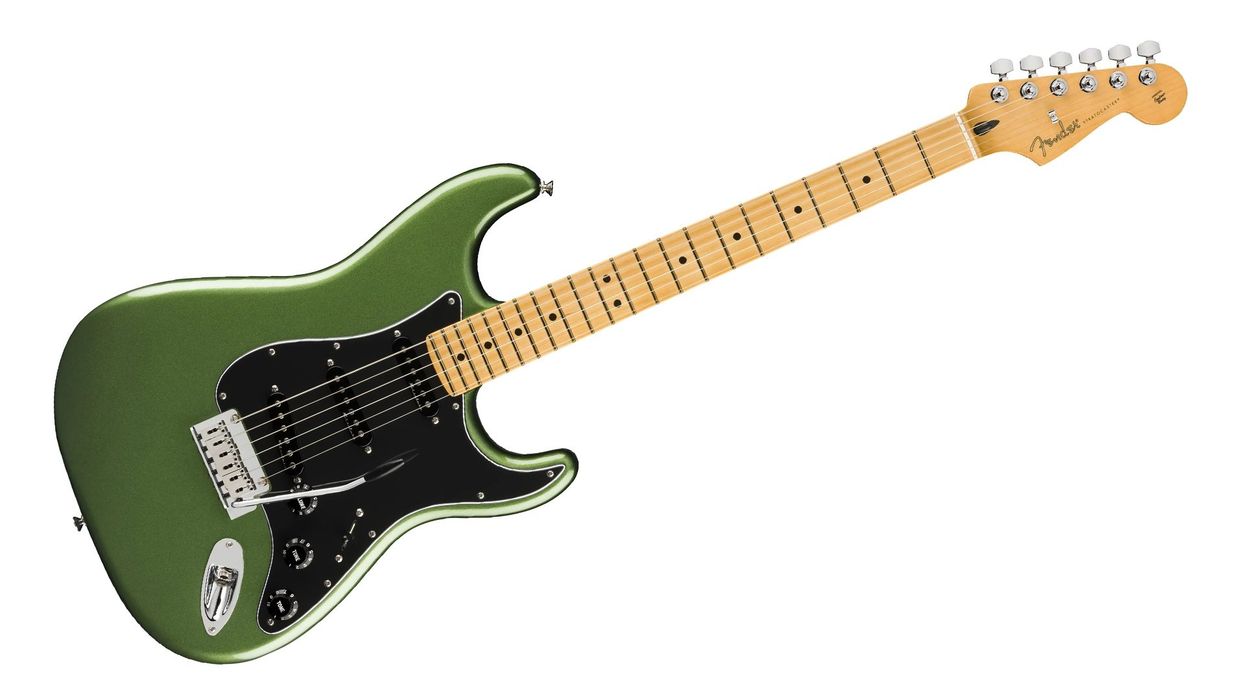
If you consider all the ways that the Stratocaster represents perfection, “feel” may not be the very first thing you think of. But while the svelte and curvaceous Stratocaster may be the definitive visual representation of “electric guitar” in a dictionary, and ring like a cathedral chime, the thing that distinguishes a great or priceless Strat from a merely good one is often its ergonomic excellence. Slim, light, contoured in all the right places, it’s a marvel of form following function. I’ve played a lot of old guitars over the years, but the one that I can still feel in my bones almost two decades later was a 1964 Stratocaster. The sight of it was beautiful enough to be forever etched in my brain’s visual cortex. But it was the feel of cradling that instrument, above all other things, that remains.
The Mexico-made Fender Player II Modified Stratocaster does much to underscore the tactile pleasures of Strat-ness. The rounded edges of the maple neck are as comfortable as an old baseball glove. The medium-jumbo frets lend a silky glide to finger vibrato and bends. The tremolo’s sensitivity and stability beckon a player to slow down and indulge in its bouncy precision. But the Player II Modified Strat’s delicious feel is also reinforced and enhanced by the sound of the Player II Noiseless pickups and the way the quiet performance invites deeper exploration of tone detail and dynamics. And the switching, which enables blends of the bridge and neck pickup to offer an even more expansive tone palette. The build quality is just about flawless, the locking tuners are a considerable asset, and at $1,049 it represents a solid deal at a time when new guitar prices are headed steadily northward.
Small Steps Forward, Big Returns
I’m a bit of a Fender traditionalist when it comes to necks. I like the vintage style 7.25" fretboard radius and a profile just on the chunky side. But between owning a few 9.5" radius Squiers that I love, and playing and reviewing enough contemporary Fenders with the same spec, I’ve come to appreciate the feel of the slightly flatter fretboard. For players that prefer the 9.5" radius and know Fender’s modern “C” profile well, this neck might not, at first, feel like much of a revelation. Indeed, Fender’s modern “C” is so ubiquitous it can feel almost generic. But the contoured edges do much to make the neck feel a little more vintage and make the Player II Modified a more inviting instrument in general.
Once you’re hooked on the feel of the Player II Modified, you’ll find the pickups even more alluring. If Fender sacrificed any classic tonalities in making the Player II Noiseless Strat pickups quieter, it’s hard to hear. I sense a little extra warmth and roundness in addition to a lack of 60-cycle hum—and the latter perception may color the former. But the output is anything but suffocated, and the relative quiet means a lot less ear fatigue when exploring overdrive and distortion tones, which are a great match for this instrument.
The real treat, though, is the push-pull switching on the treble pickup knob, which enables the addition of the pretty neck pickup to the bridge pickup and combined bridge/center pickup. And though I dutifully explored every single pickup and combination here (and was smitten with the middle position Jerry Garcia tones in particular), I had a hard time leaving behind the creamy/crispy combination of the neck and bridge together. If, like me, you often go hunting for the perfect crossover of sunburnt surfy top end to brighten up your Curtis Mayfield soul ballad tones, the Player II Modified will serve up this most delicious sonic fruit in abundance.
The Verdict
Fender’s marketplace competition for the very guitar it created has never been more intense. But the Player II Modified Stratocaster offers real, if incremental, improvements that enable Fender to stay at the top of the heap in the circa $1K solidbody segment. It allows players to experience everything that’s great about a Stratocaster without settling for an otherwise capable S-style with a weird-looking headstock. There’s room for improvement here and there: The vibrato could be a little more tuning-stable under heavy use and more softly sprung off the factory floor. And, at least to my eyes, an opportunity to make a really stunning looking Stratocaster was missed by slapping a very ’70s black pickguard on a green that evokes the playful custom colors of the ’60s. But there are plenty of more traditional color options elsewhere in the Player II Modified Stratocaster line. And if they all provide as pleasurable and inspiring a playing experience as our review instrument, Fender is well-prepared to take on all comers in this very competitive segment of the solidbody market.
Lessons From America’s Most Passionate Guitar Collectors
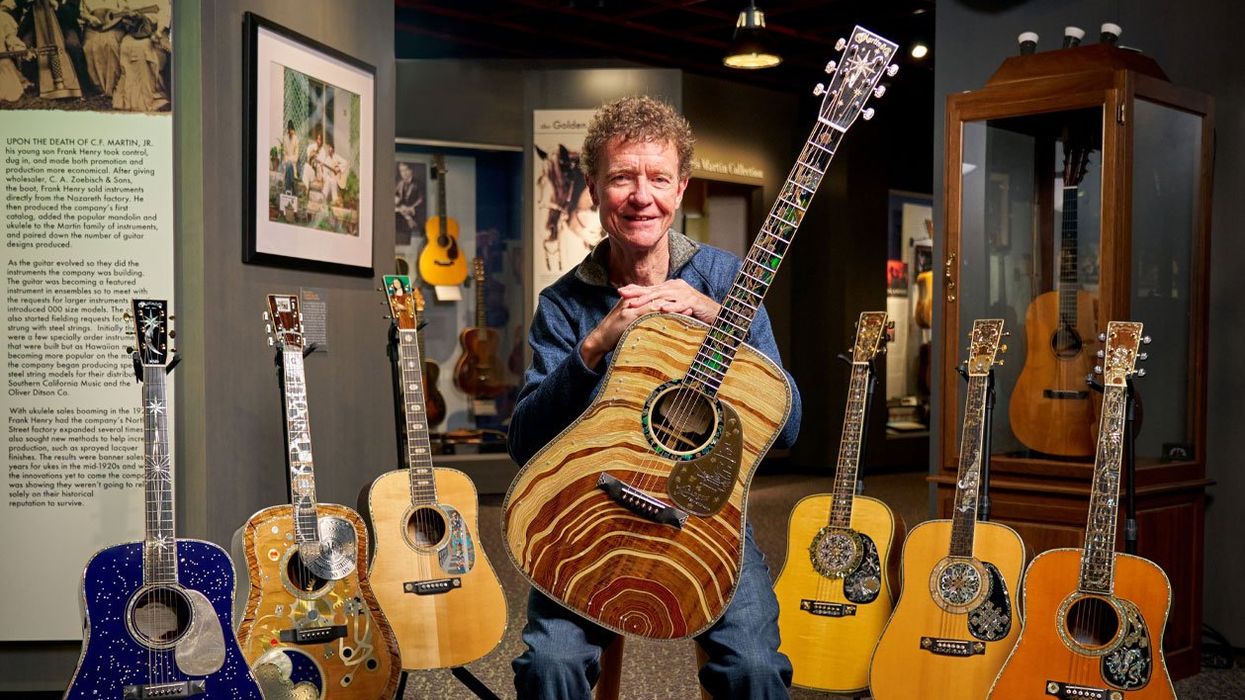
Take it from the pros: There’s no wrong way to collect guitars.
Let’s talk about collecting.
Guitars, yes. But also … other things.
I’ll admit it—I’ve been a collector for a long time. It really kicked in after I joined the family business. Suddenly, I had a little disposable income and a curiosity for auctions. The kind you actually had to show up for—no internet, no clicking a button in your pajamas. Just paddles, raised eyebrows, and the thrill of the chase. I thought the things I brought home were cool. My wife Diane wasn’t always convinced.
But let’s bring this back to guitars. Yes, I absolutely collect them. Mostly Martins, old and new—as you might guess—but not exclusively. Some are personal, out of my own pocket. Others are for the Martin Guitar Museum collection, which I help curate with a team that shares the same passion. We’ve built something truly special, and I’m incredibly proud of what’s on display (and what’s waiting in the wings).
Like many museums, we can only showcase a portion of our collection at any one time. We rotate pieces, we loan to other institutions, and we keep looking for the next instrument that tells a story worth preserving.
A Favorite Find
One of my most memorable guitar acquisitions happened at Sotheby’s in New York. This time, I was bidding on behalf of the company. Diane and our daughter Claire came with me, though they were a bit less excited about the auction scene. (While I was scoping out guitars, they ducked over to the American Girl store around the corner.)
As luck would have it, the guitar I was there for came up just as they returned to the gallery. I was mid-bid—enthusiastic, focused. Diane overheard the auctioneer call out the latest bid and gave me that look. I was committed. I stayed in. And I won.
She walked over and asked, “What did you just do?”
“I bought another guitar for the museum,” I told her.
She half-smiled. It wasn’t cheap.
The guitar was part of Kenny Wayne Sultan’s collection, built from the same batch of 000-42s as Eric Clapton’s iconic model. Today, it’s an important piece in our museum’s story.
You might think I’d have enough guitars, especially with two factories full of them and a world-class museum in my backyard. But I love collecting. So I keep buying guitars. Full disclosure: I’ve used the employee discount more than a few times. Still do.
George Gruhn: Collector First, Dealer Second
I’m not alone in this. My friend George Gruhn (yes, that George Gruhn) is widely known as a legendary vintage guitar dealer. But first and foremost, he’s a collector.
George first caught the bug back in 1961, as a high school student in suburban Chicago. He didn’t even play yet, but he helped his brother pick out a 1929 Martin 0-28K. That was the spark.
“I became addicted to collecting,” George told me. “For every guitar I found for myself, I’d come across dozens more I didn’t want personally, but they were such bargains I could flip them to fund my next find. Gruhn Guitars is essentially a hobby that morphed into a career.”
When I asked George about a favorite find, he lit up.
“In 1974, a pawn shop near my store called about an old Martin. It turned out to be the most elaborately ornamented early Martin I’ve ever seen—made during C.F. Martin Sr.’s era. I sold it to Steve Howe of Yes, but years later, I had the chance to buy it back. It’s still one of the crown jewels of my collection.”
“You don’t choose what to collect. It finds you—one vintage archtop or parlor guitar at a time.”
These days, Gruhn’s approach has evolved.
“Early in my career, I traveled constantly. Now, I’m more like an angler—I dangle the lure, and people bring guitars to me.”
He also offered advice to new collectors: Always buy from a reputable dealer, and ask for written guarantees or certificates of authenticity. If you’re not experienced, get the instrument appraised by someone who is. And while provenance can be important in memorabilia items, which have added appeal and higher monetary value due to prior ownership by a famous performer, George believes the core of collecting is still about the instrument: its builder, its story, and its sound.
The Passion Play
George isn’t the only one I’ve learned from. Norm Harris of Norm’s Rare Guitars is another kindred spirit. You may have seen the documentary about him—if not, add it to your list. Norm might have a storefront, but some guitars? They’re part of the family.
Closer to home, my friend Fred Oster, who you might recognize from Antiques Roadshow, has been a generous mentor over the years. Fred once told me, “You don’t choose what to collect. It finds you—one vintage archtop or parlor guitar at a time.”
All of these folks blur the line between collector and dealer. Some deal to fund their collections. Some collect to enrich their understanding of the instruments they sell. Either way, it’s about passion.
For me, collecting guitars is more than a habit; it’s a love affair. And if it turns out to be a good investment down the line? Well, that’s just a bonus. You could put your money in a 4% treasury bond, but you can’t strum one of those on the porch.
Keep on collecting.
PRS Archon Classic Review
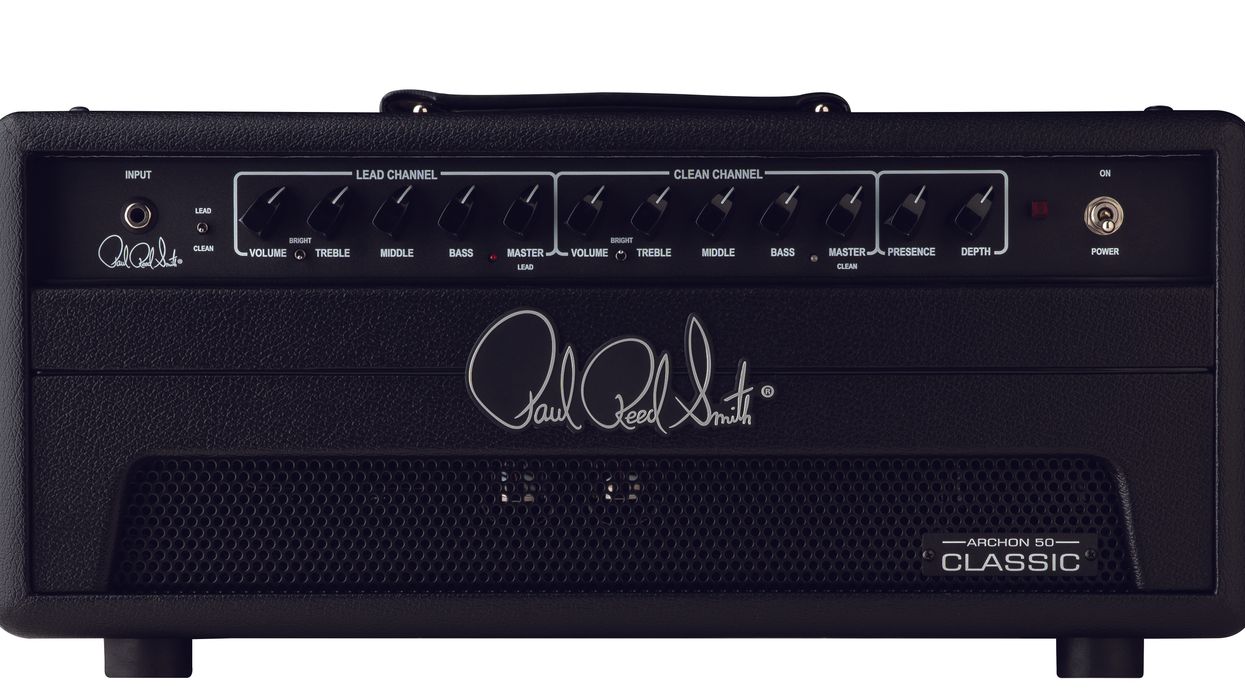
The PRS Archon amplifier was released in December 2013 and quickly made its mark with modern metal guitarists. In 2021, the amp disappeared from PRS’ product line before being reintroduced as more affordable, Asia-built, 50W combos and heads, which remain in production. The new Archon Classic isn’t merely a rehash of the previous Archon, however. It’s a completely new and very different design. While the original Archon was a study in extremes—with pristine cleans and an ultra-high-gain lead sound—the Archon Classic is more balanced with slightly grittier clean tones and a more mid-rich gain profile.
Designed by PRS’ Doug Sewell, who was a boutique amp designer when he met Paul Reed Smith at the Dallas Guitar Show when their respective booths were adjacent to each other, the 50W, two-channel, Archon Classic head is made in Indonesia and is priced at a very reasonable $1149.
The original Archon 100 used a fairly conventional set of four 6L6GC power tubes and six 12AX7 preamp tubes, but the Archon Classic is outfitted with two JJ 6CA7 power tubes and six JJ ECC83S preamp tubes. I wasn’t too familiar with the 6CA7 power tubes so I reached out to Sewell for clarification. “Performance-wise, this tube sits nicely between an EL34 and a 6L6GC,” explains Sewell. “When voicing the Archon, this tube best fit the circuit and tone we wanted to achieve. The original U.S.-built Archons shipped with 6L6GCs. The 6CA7 Archon Classic gives a touch more British vibe and sweeter mids. Apparently Eddie Van Halen’s plexi Super Lead 100W had 6CA7s. Enough said!”Less is More
Operationally speaking, the Archon Classic is as straightforward as you can get. The control panel has independent sets of knobs for the clean and lead channels: volume (gain), treble, middle, bass, master volume, and bright toggle switches. There’s also a set of global control knobs for presence and depth (which adds low end).
The original Archon offered power scaling on the 50W and 25W models, but neither the reissue nor the Archon Classic offer the feature. This streamlining of the Archon’s controls is by design. Sewell adds, “As the Archon matured, our objective was to scale down the features, refine the tones, provide a much more cost-effective amp for a wider customer base, and break out of the metal niche many mistakenly perceived that amp to be in.”
While PRS opted for a stripped-down approach with the Archon Classic, the back panel retains the useful bias adjustment jacks seen in the original. This allows you to use a multimeter to assess whether tubes are dead or have drifted out of spec relative to the other tubes in the unit. Adjustments can be made using a small, jeweler’s Phillips head screwdriver.
Pure Tone Machine
Where the original Archon’s clean tones are hi-fi and pristine, the Archon Classic’s cleans are grittier, with more attitude. At its lowest clean channel setting, the output is already slightly driven, particularly when a bridge humbucker is in the mix. Using a single-coil yields a slightly cleaner tone, but with gain settings this low there’s not a ton of headroom to play with, even with master volume up pretty high. But by slightly bumping the clean channel’s volume up to 9 o’clock, the amp feels significantly louder and is much better suited for a band mix.
When I push the clean channel’s volume to noon and bash away on a bridge humbucker, the Archon Classic delivers beautiful breakup that is, to my ears, just right—not too dirty but not too clean. There’s a lot of gain available in the clean channel, and if you turn up the volume between 3 o’clock and maximum, you get various shades of rhythm guitar crunch, from “Won’t Get Fooled Again” to “You Shook Me All Night Long.” There’s also enough sustain here for classic-rock lead sounds. It’s not often I can get pinch harmonics to pop on an amp’s “clean” channel, but I did here, with ease.
Switching between channels is seamless and there are no pops or noise when clicking the one-button footswitch. The lead channel sounds voiced with a nod to ’70s and ’80s hard rock, rather than the more modern, scooped voice of the original Archon. With the lead channel’s volume around 10 o’clock, it’s about as dirty as the clean channel with its volume knob maxed. This is a great jumping-off point for creating an all-purpose, versatile two-channel setup, where I dialed the clean channel with the volume maxed for a hard-rock rhythm sound and bumped the lead channel’s volume to just under noon, to get a comparable but boosted sound for leads.
The Verdict
“Archon” is Greek for “ruler” and it’s not hyperbole to say the Archon Classic rules. Its simple design—the amp doesn’t even have a standby switch—makes dialing up killer sounds effortless, and such simplicity is huge when you want to get down to playing. The sole focus of the Archon Classic is tone, and that it delivers in spades.
Finding the Perfect Electric Guitar: Have You Played “The One?”
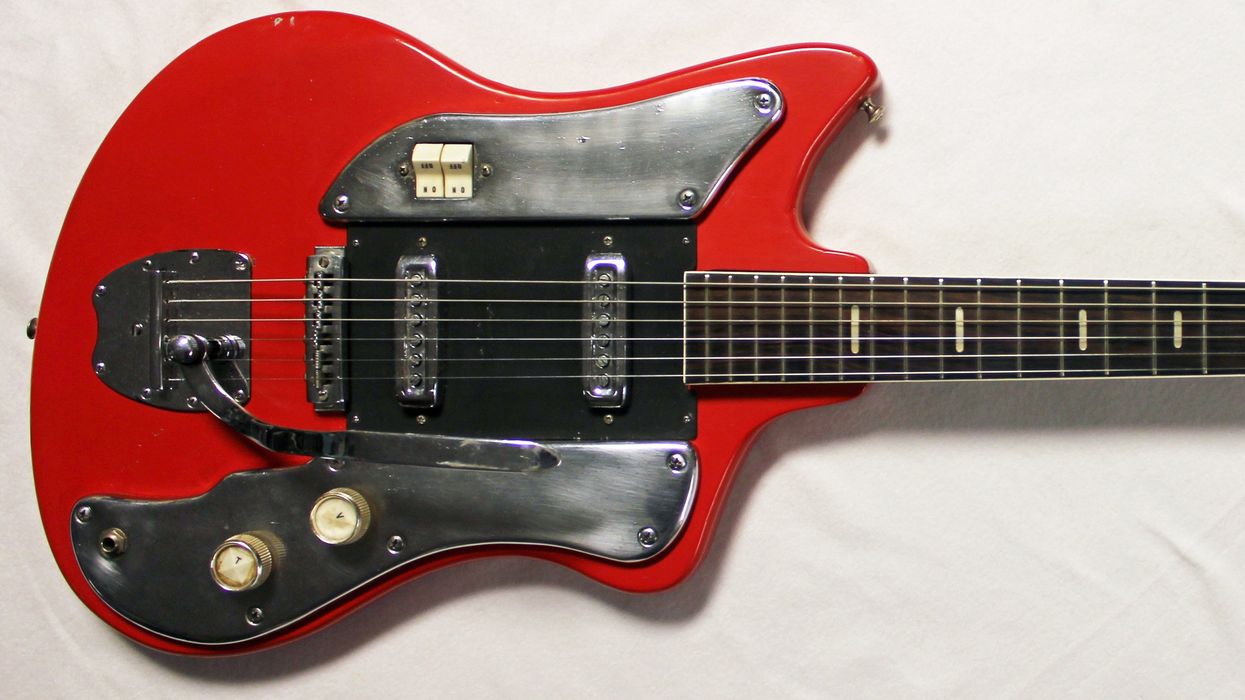
My wife and I really enjoy living in the Northeast. Rolling hills, all four seasons, close to the coast, and plenty of day trip getaways to keep our summers busy and our vacations peaceful. One of our favorite haunts is Vermont and the town of Bennington. There are historical features there, such as the Bennington Battle Monument and the grave of the poet Robert Frost. Chiseled onto the face of his stone is the inscription, “I had a lover’s quarrel with the world.” This lovely, simple quote perfectly summarizes my relationships with guitars.
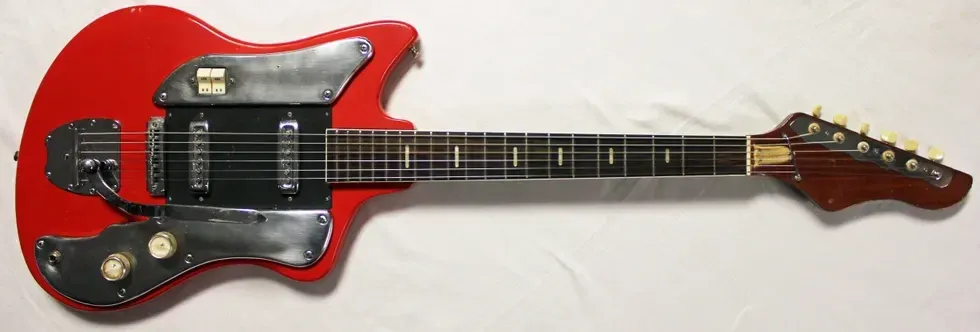
When I was young, I started taking lessons in Nazareth, Pennsylvania—right under the shadow of the Martin Guitar factory! I had all the inspiration in the world, and yet I would choose laziness and not practice. My mom would cancel my sessions, and then the itch to play would bubble up, and I’d be on a huge creative bender. This is how it went for most of my life. Fire and ice, playing and not playing. I probably should be an amazing player, but, alas, I remain a caveman. Part of the reason for that is I just don’t have a good ear and can’t carry a tune. My wife, on the other hand, is a music teacher and has incredible musical ability. She can play just about every instrument, even the wooden fifes sold at the Bennington Battle Monument! Seriously, she plays historical music on these primitive instruments while I’m messing around with the pop guns.
In my late teens and 20s, I really went on a creative spell and there was no stopping my insanity for guitar. This was also when I was buying old guitars and piecing them back together. I met Mike Dugan (the guy who plays guitar in all my videos) and started to join bands and go to open jams. Soon I found myself buying and selling guitars and looking for my “tone.” I guess we all go through this search at one time or another, but I just couldn’t be satisfied. For a while, I played a Univox Hi-Flier and then a nice Yamaha SG-1000. Eventually, I was running through guitars like water in a stream. Never ending.
Mike Dugan would always tell me, “When you know, you know,” but I just couldn’t figure it out. It wasn’t until I started hearing him play in my studio every week that I developed an ear for guitars. I mean, I still struggled tuning a guitar, but I could sense when a guitar had “it”—that zing, that bite, that crystalline quality that you could hear. Wood didn’t matter. Pickups didn’t matter. It just worked or it didn’t, and I wouldn’t be swayed. And the first guitar where I “knew” was this Kawai S160 dating to the early ’60s. The necks on these are huge, and the pickups have low output, but they all sound great. Really, I like all the Kawai electrics from the early days, but this one is my “one.”
“Have you found your guitar? Your tone? It’s out there somewhere for you.”
Located in Hamamatsu, Japan, Kawai was making pianos before their foray into electric guitars. A lot of the early Japanese guitar makers lacked understanding of the guitar, but what they did have was lovely wood and experienced wood craftsmen. These guitars are robust and solid; they could hammer in fence posts! The truss rods don’t work at all, but the necks are so chunky that it doesn’t matter! And these early S-series Kawai guitars have some of the most beautifully figured rosewood that I’ve ever seen. Simply gorgeous.
The electronics are simple and easy to navigate with just one tone and volume pot, and one on/off switch for each pickup. The pickups handle overdrive or fuzz so well. These guitars also came in three- and four- pickup versions, and all sound fine. The tremolo pictured on mine is really the one to get, because it actually works well! Since most of the Kawai guitars were imported to Chicago, they were found in the hands of many bluesmen, including Hound Dog Taylor.
So my lover’s quarrel with guitars is a real thing. But some guitars just inspire you to play, or in my case, just make some noise. So how about you? Have you found your guitar? Your tone? It’s out there somewhere for you, and here’s hoping you find “the one” … or two!
Royer Labs Introduces the R-12 Active Ribbon Microphone
Royer Labs has introduced the R-12 Ribbon Microphone, designed for both studio recordingand live sound applications. The new R-12 delivers high-quality performance at a sub-$1K price, offering thenatural sound of a Royer ribbon mic with the added versatility of onboard bass-cut and pad switches. The R-12excels at capturing electric and acoustic stringed instruments, vocals, brass, pianos and organs, as well asdrums and percussion instruments.
The R-12 features the same 2.5-micron direct-corrugated ribbon element as used in Royer’s industry-standard R-121 microphone, enabling it to handle the extremely high SPLs (160dB @ 1kHz) that Royer R-series mics are known for.
The R-12 features Royer’s proprietary onboard phantom-powered electronics circuitry mated to a beefed-up transformer, which combine to deliver condenser microphone output levels for recording vocals, acoustic instruments, and other quieter sound sources. The R-12’s active electronics also place a perfect load on the ribbon element at all times, enabling the microphone to deliver full sonic potential regardless of the preamplifier or DAW it’s plugged into.
By engaging the R-12s switchable -15dB pad, the mic’s output level drops to that of Royer’s non-powered R-10 ribbon mic, which is preferable for louder instruments like drums and high-volume electric guitars where more headroom is needed. Headroom-related distortion on even the loudest sound sources is non-existent.
The R-12 is also outfitted with a switchable high-pass filter precisely tuned to reduce low end proximity buildup and rumble, making it an easy choice for capturing vocal performances, close-miking instruments and loudspeaker cabinets, etc.
Completing its rich feature set, the R-12 houses an internally shock-mounted ribbon transducer, which helps isolate and protect the ribbon element while also reducing handling noise. Combined with a built-in triple-layer wind screen system, the microphone’s ribbon is effectively protected against plosives and other wind-related noise and air blasts.
John Jennings, President of Royer Labs, commented on the new R-12 Ribbon Microphone, “The R-12 is a beautifully designed ribbon mic, delivering world-class performance at a killer price. It has roots in our non-powered R-10 ribbon mic, which is in studios around the world and has been on Dave Grohl’s insanely hot live guitar cabs for years, and it contains active ribbon mic circuitry based on what we use in much more expensive Royer models. It’s an extremely versatile ribbon mic that we’re proud to release now.”
The Royer Labs R-12 Ribbon Microphone and mic mount ship in a hard-shell case, with a street price of $899 and matched pairs available for $1,849. The R-12 is expected to become available in mid/late July 2025. For additional information about the R-12, please visit www.royerlabs.com/r-12/.
Introducing Catalinbread Proto Club
At the shop, our engineers are always tinkering on breadboards, pouring their hearts into passion projects that sometimes get sidelined by part obsolescence, indecision, or just not fitting our usual vibe. That’s why we’re stoked to launch Proto Club, where anyone can snag these limited-run pedals, like the Tritone (Proto 227), a slapback pitch echo born as a B-side for our Soft Focus Deluxe but too wild for its palette, packing a call-and-response octave-up that rides sidesaddle with a blendable perfect fifth for killer three-note arpeggios. It drops today, for only $149.99, but it’s gone after two weeks! Your first Proto Club purchase scores you the exclusive Proto Club Passport booklet, stamped and ready to unlock killer perks—collect stickers with each pedal to earn bonus stuff, like unreleased or staple production pedals. Plus, you’ll get a dedicated email to send feedback straight to our engineers, making this a true community vibe. Ready to get weird with us? Catch you at the Proto Club!
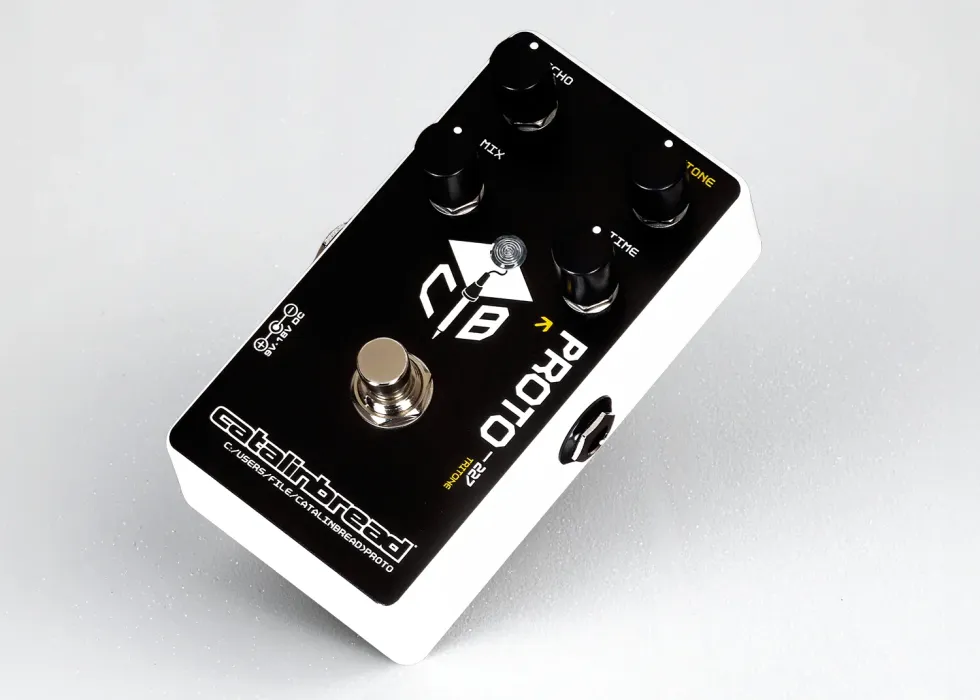
Our inaugural foray into the Proto Club began as a B-side for our Soft Focus Deluxe. On that pedal, we had room for six programs, and a handful of them were just a bit too outside the scope of that device. This one, the Tritone, was universally loved by the crew but the vibes clashed with the palette of the Soft Focus Deluxe a little too hard. It’s been on some of our own pedalboards for some time. Unfortunately, it’s stayed there away from public eyes and ears, but fortunately, it fits the exact vibe of the Proto Club!
Proto Club was established for this exact reason; we have tons of effects on our breadboards and programming suites that we can’t squeeze into the release schedule, things that don’t quite fit into our lineup, circuits with too niche of an audience, or “our versions” of beloved classics, direct to you stripped of frill. This lets us get a little more creative for all you effects freaks out there. Y’all are our people!
You wanted experimental? You got it! The Tritone features a call-and-response type octave-up that rides sidesaddle with a blendable perfect fifth. When coupled with an on-board slapback echo, this gives you the ability to seamlessly craft bursts of three-note arpeggios that can stand alone as a killer lead augmentation or can align with your rhythm parts to fill in the gaps with some interesting texture. Synth players? Please. The Tritone absolutely loves electronic instruments and takes them with ease. You can keep the action close to your chest with the addition of a wet-dry blend of the overall signal as well as one for the tritone. You can adjust the timing of the arpeggio as well as the echo feedback for some chaotic oscillation in certain settings.
Learn More Here!
Better Lovers Rig Rundown with Will Putney, Jordan Buckley & Steve Micciche
Tuning up for their own tour that starts this week, the loud ’n’ heavy merchants from Buffalo show PG’s Perry Bean how they apply the hot sauce.
In Better Lovers, guitarists Jordan Buckley and Will Putney, plus bassist Stephen Micciche, go heavy and strange—a combination they achieve by carefully selecting their instruments, amps, and effects. Their latest album is called Highly Irresponsible, but when it comes to nailing their riffs and sounds, this Rundown with PG’s Perry Bean, filmed recently at Nashville’s Brooklyn Bowl, makes it clear they are anything but that!
One-Eyed 6 Strings
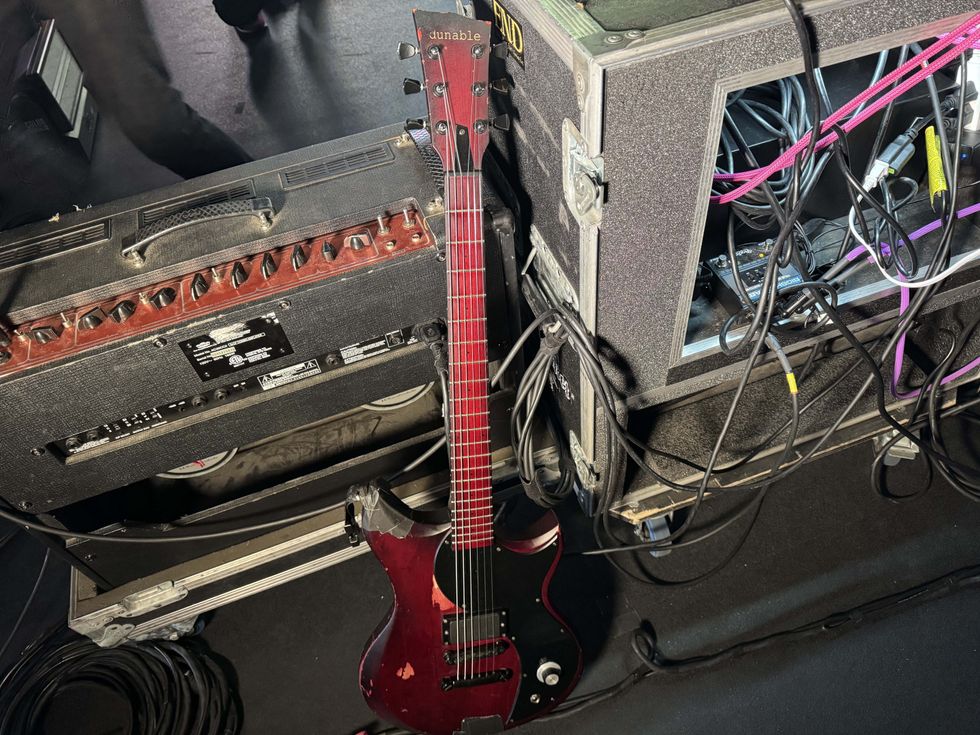
Putney’s main guitar is a road-worn Dunable Cyclops, built especially for him by Sacha Dunable. It became the blueprint for his Dunable signature model. “The signatures are awesome, but I love this guitar. I play it to death,” he says. It‘s got an EMG 81 pickup and a master volume dial. That’s it. Putney has a backup that’s nearly identical, except for the stage rash.
Practice Makes….

Putney is using this DE version of his signature to practice new songs and the new sounds that come along with them, including those made via the onboard EHX Pitchfork circuit, with power/signal bypass, momentary on/off latching, pitch up/down/both selection, an interval selector, and a mix knob. The scale is 25.5" and it sports a Graphtech TUSQ nut along with an EMG 81. Most Better Lovers tunes are in drop D, by the way, with Ernie Ball strings.
Power Rager

This Peavey 6505 V2 arrived just in time for this night's gig, sliding in next to the two 5150s that have been in Putney’s live rig for years. It’s got 120 watts and invokes the spirit of one of Eddie Van Halen’s favorite heads. It’s got 6L6s, but he’s contemplating a swap with EL84s after the tour, just for an A/B test.
Cab Envy
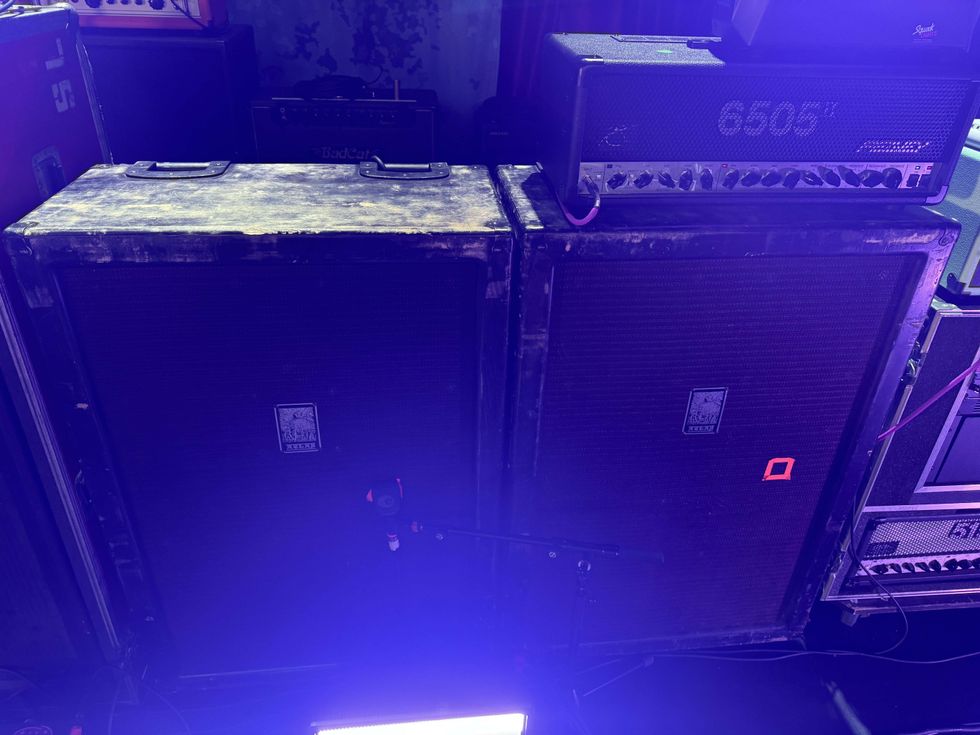
How about a pair of Atlas custom 6x12 cabinets to plug your guitar and pedals into? “They’re loud,” Putney understates. And he A/Bs between that Peavey/Atlas combination and a Vox AC30 for his clean and dirty sounds. He uses a Mastermind PBC by RJM Music Technologies for switching both amps and pedals.
Set It, Don’t Sweat It
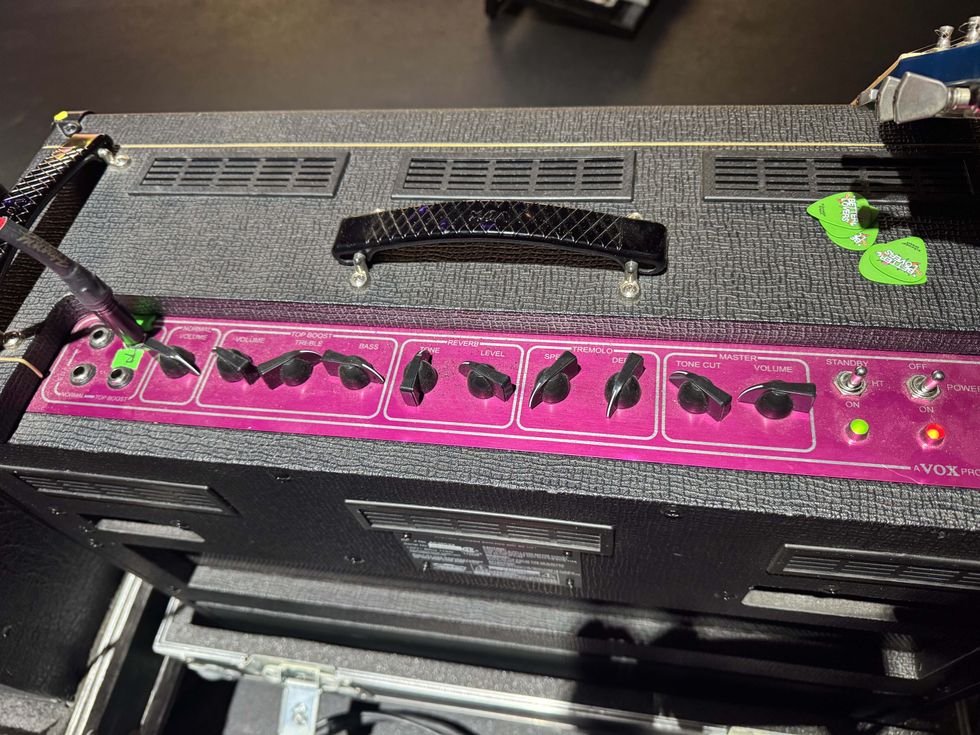
Here’s a look at where Putney’s AC30 lives.
Pedal Power
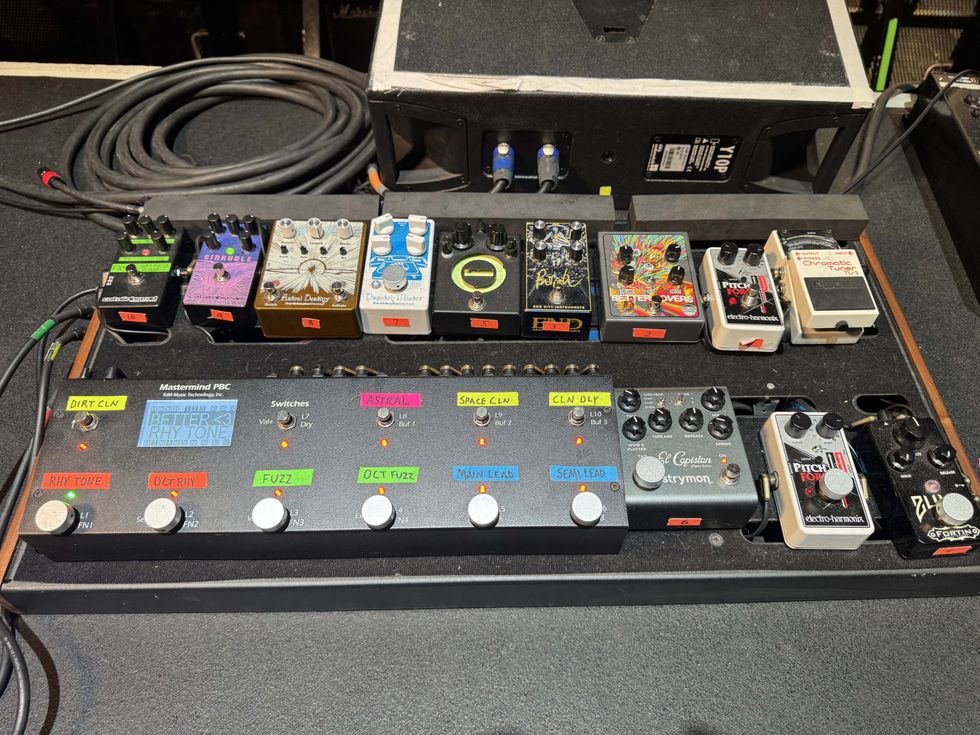
Running through that Mastermind are a fuzz pedal Putney designed with God City’s/Converge’s Kurt Ballou called the Pariah, and there’s also a Sinkhole, Astral Destiny, and Soft Focus Reverb from Catalinbread, an EQD Dispatch Master, two EHX Pitchforks, a Fortin Zuul+, a Strymon El Capistan, a Better Lovers signature Night Terror overdrive, and a Kevin Hickey Signature Chorus.
Blue Bomber

Buckley got this ’78 SG from Rochester, New York’s House of Guitars when he was a kid. It’s been through a lot of breaks but has come through triumphant, with double EMG 81s. And the Vox AC30 it’s leaning on is his, too. Listen to how it sounds with a whole lotta reverb and a slide in the Rundown! That’s his sound for the concert opener on the current tour.
Don’t Even Look at This Guitar

Here’s Buckley’s favorite ESP Eclipse, also with EMGs and lot of wear on the rear upper bout an around the picking zone. It’s got an ESP “full-thickness” body, so it’s heavier than his beloved SG.
More Dunable

This Cyclops has got its original two Dunable pickups and a tone and volume control—another stripped-down heavy-rock machine! How did Buckley acquire this one? He wanted a red guitar for a video, and Dunable, after an ask from Putney, delivered.
Effect-ive
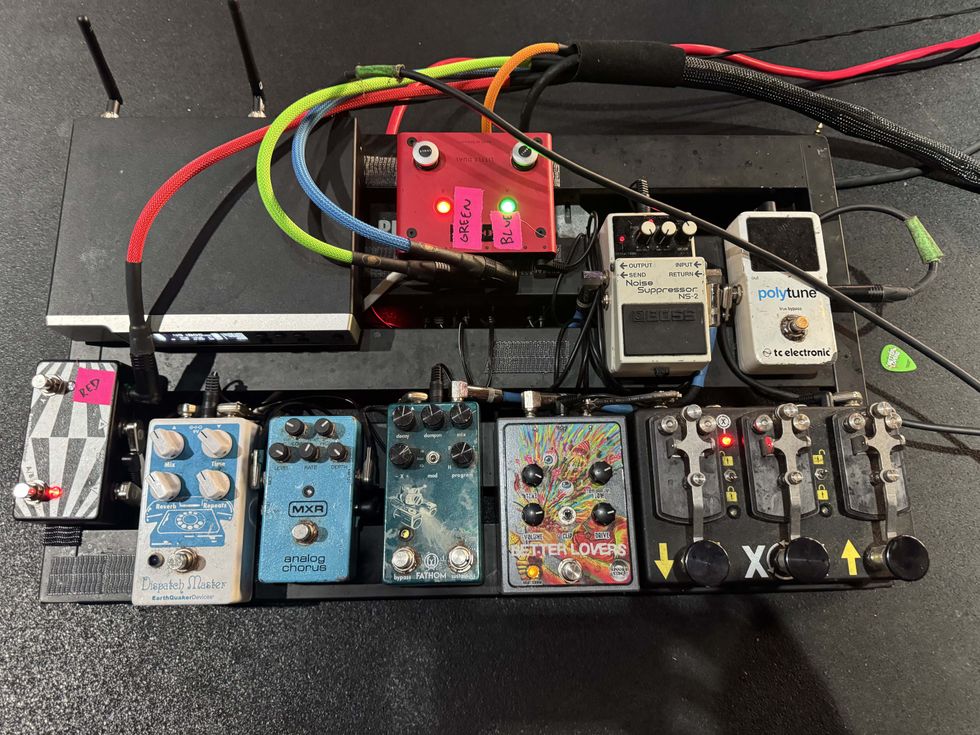
What’s he got on the floor? A Lehle Little Dual II amp switcher, a TC Electronic Polytune, a Boss NS-2 Noise Suppressor, an EarthQuaker A/B box and Dispatch Master, an MXR Analog Chorus, a Walrus Audio Fathom Multi-Function Reverb, a Better Lovers signature Night Terror overdrive, and a Coppersound X Jack White Triplegraph Octave.
Marshall Power

Buckley says he’s been using JCM 800s for decades. This one is borrowed and “feeds back a little less than the ones I own,” he confides.
Preacher Tone
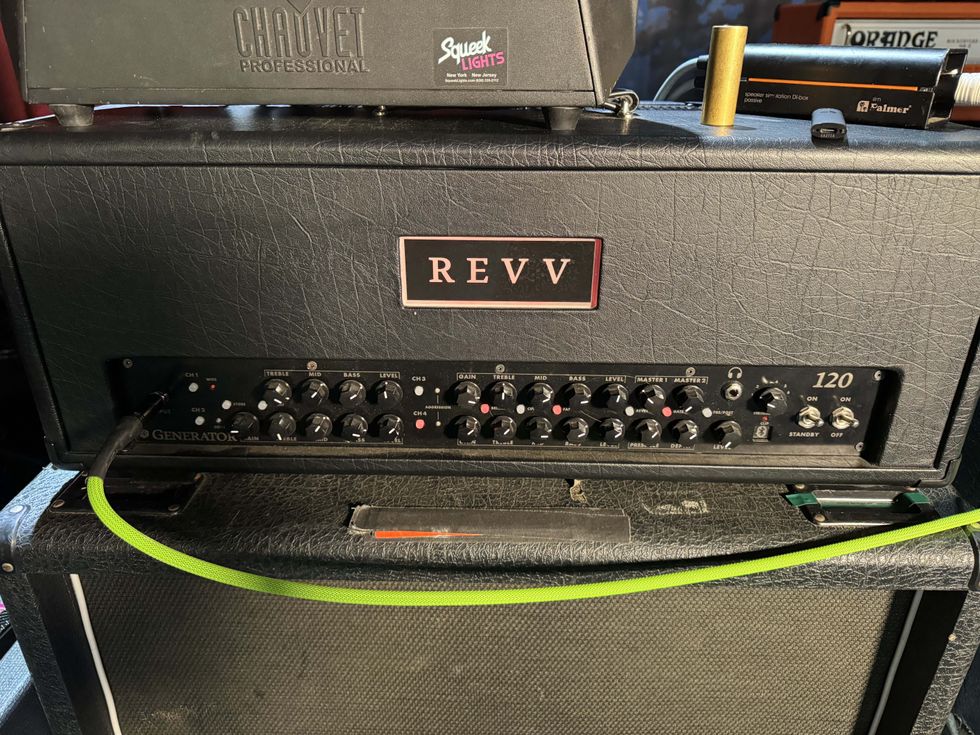
And here’s his Revv Generator 120, which he sets on channel 4.
Foam-O

Micciche’s seafoam green Deluxe PJ is a not-so-common bottom rung. It has a P body and a J neck. It boasts a pair of Seymour Duncan Quarter Pounder bass pickups.
The Ass Beater

That’s right: Micciche calls this one the Ass Beater. It’s an Ibanez with active Bartolini pickups. Strictly speaking, it’s an Iron Label SRMS625EX with a 5-piece, multi-scale walnut neck and Ebonol fretboard.
California Dreamin’

This Sandberg California model was a custom order, with active and passive pickup options.
Bass Barkers

Here’s the array of Micciche’s powerhouse bass amp line-up: an Orange AD 200 Bass Mk3 he’s had about 15 years anchors his stage left, stage right hosts an Orange Terror Bass, the AD 200 goes through an Orange cab while the Terror hits an Aguilar 8x10. Both rigs fire at once, all the time.
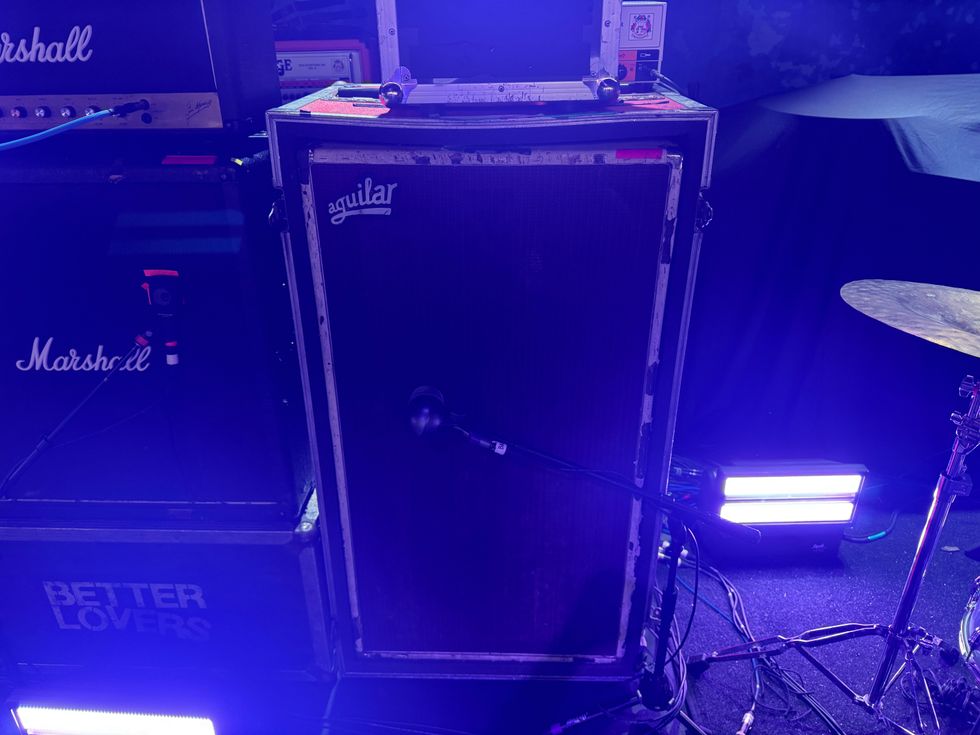
Dirty Half-Dozen

A modest six boxes rest on Micciche’s board: an Orange Two-Stroke, a Darkglass Microtubes B7K Ultra, an MXR Studio Compressor, a Lehle Little Dual switcher, a TC Electronic Polytune, and his wireless. A Voodoo Lab Pedal Power 4 stokes the fires.

EarthQuaker Devices Astral Destiny Reverb Pedal
Catalinbread Soft Focus Shoegaze Reverb Pedal
EarthQuaker Devices Dispatch Master
Lehle Little Dual II Amp Switcher
Darkglass Microtubes B7K Ultra
The Mark IIC++ Available for the First Time as a Limited-Edition Production Model
Built in Petaluma, CA, experience one of the rarest and most coveted vintage amplifiers ever, the Mark IIC++, in solid new form, built by the same artisans who crafted the originals 40 years ago.
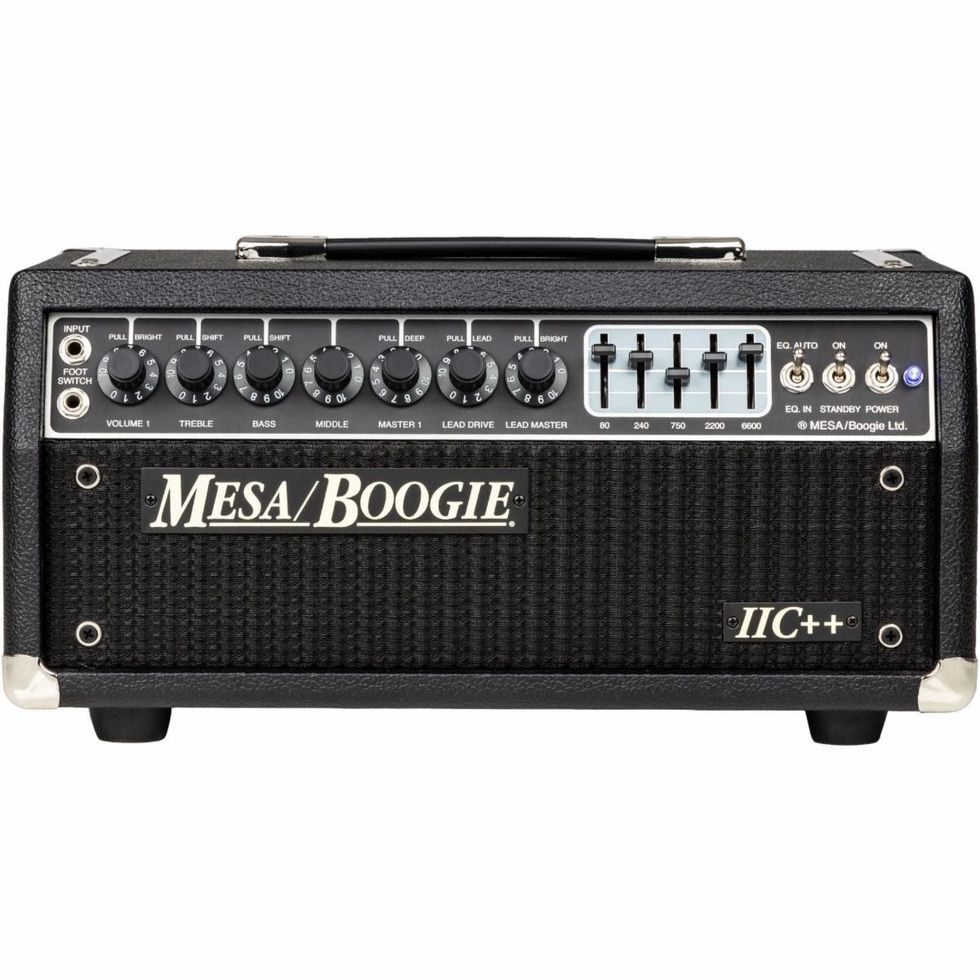
MESA/Boogie® is the original boutique Home of Tone, handcrafting amplifiers of uncompromising quality from the world’s finest materials in Petaluma, California, USA. Today, with reverence and pride, MESA/Boogie has announced the arrival of the storied Mark IIC++® amplifiers. An extremely limited production, now is your chance to own an original icon. The new MESA/Boogie Mark IIC++ amplifiers are now available worldwide to the public for the first time at authorized MESA/Boogie dealers and on www.mesaboogie.com.
We’re excited to bring a very special first official production run of the Mark IIC++, a very special ‘mod,’ done to a very few Mark IIC+ amplifiers at the request of, first Vivian Campbell, and later after other artists hearing about its added gain and girth,” says Doug West, Director, Tone Lab, Gibson Amplifiers and MESA/Boogie. “Over time this mod that was never an official model, logged a healthy list of A-Level artist recordings and this kept our Chief Tech and IIC+ guru Mike Bendinelli busy for decades doing the mod for musicians who’d heard of the legendary aggression for metal styles and sent their IIC+’s bought used to him for an update. This limited run of 200 very special new production amplifiers gives those who have always dreamed of a C++ a chance to own one without the hefty price tag of a pre-owned 40-year-old original IIC+ and the shipping and labor costs for the update. Not to mention that it’s a solid, reliable, and consistent new build backed by our five-year warranty!”
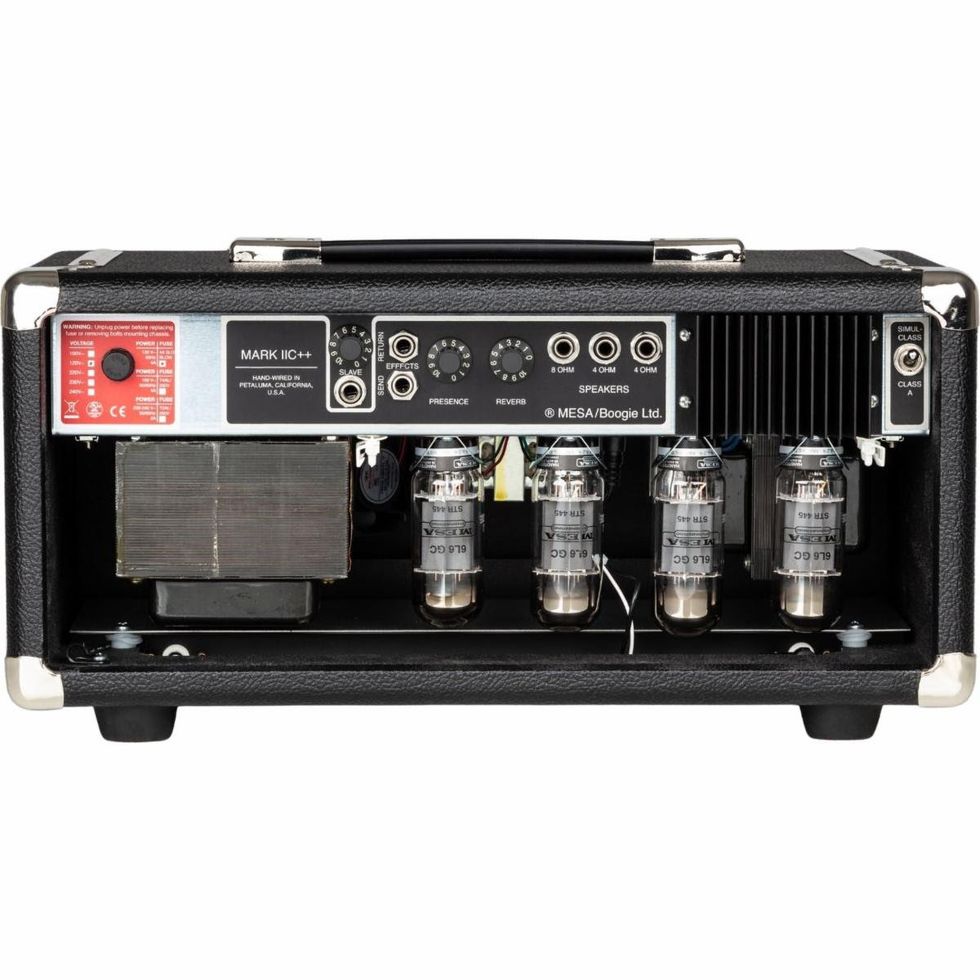
The iconic Mark IIC+ amps were first developed in 1985 at the request of Vivian Campbell, and later by Kirk Hammett of Metallica, along with other noteworthy artists of the day who eventually heard them, MESA/Boogie made some modifications to a few production Mark IIC+ amps to achieve more gain in the overdrive mode and attain a thicker, heavier gain sound. These “++” designated IICs were created for the select few artists who requested them in the twilight of the C+ lifecycle and were never officially offered as a production model. The veil of time has obscured the exact number; however, it is believed that perhaps 20 or so of these mythical IIC++’s were created during the original mid-1980s IIC+ lifecycle.
In the years that followed, players who heard tales of the blistering tone and were into heavy sounds, sent their C+’s to Tech Guru and archivist at MESA/Boogie, Mike Bendinelli, to have the “++ Mod” performed outside of production time at considerable cost. Now, MESA is excited to announce a limited-edition build of only 200 of these rare amplifiers, in tribute to the music played on them and the era that spawned the great guitarists whose work therein has withstood the test of time and become truly iconic.
This new Mark IIC++ build has increased gain in the preamp, which affects the LEAD Mode only, leaving the CLEAN Mode to produce the same sparkling clean performance as the standard IIC+ production model. The LEAD Mode is thicker sounding in these ++ versions, with enhanced low end and more top end gain, cut, and harmonic layering. Visually, the ++ is identical to the current production IIC+ model offered once again, aside from the ++ notation on the etched panel on the back panel and the IIC++ plaque on the front grille.
Experience one of the rarest and most coveted vintage amplifiers ever, the Mark IIC++, in solid new form built by the same artisans who built the originals 40 years ago. These awe-inspiring gain machines have fueled some of the most iconic rock sounds ever captured on record. Now, you can have a chance at owning one of these mythical beasts and utilizing its “incendiary” gain and expressive power for your musical dreams and aspirations. Don’t miss out on this limited-time build of the infamous Mark IIC++.
Martin Guitar's New Inception, X Series & Road Series Models
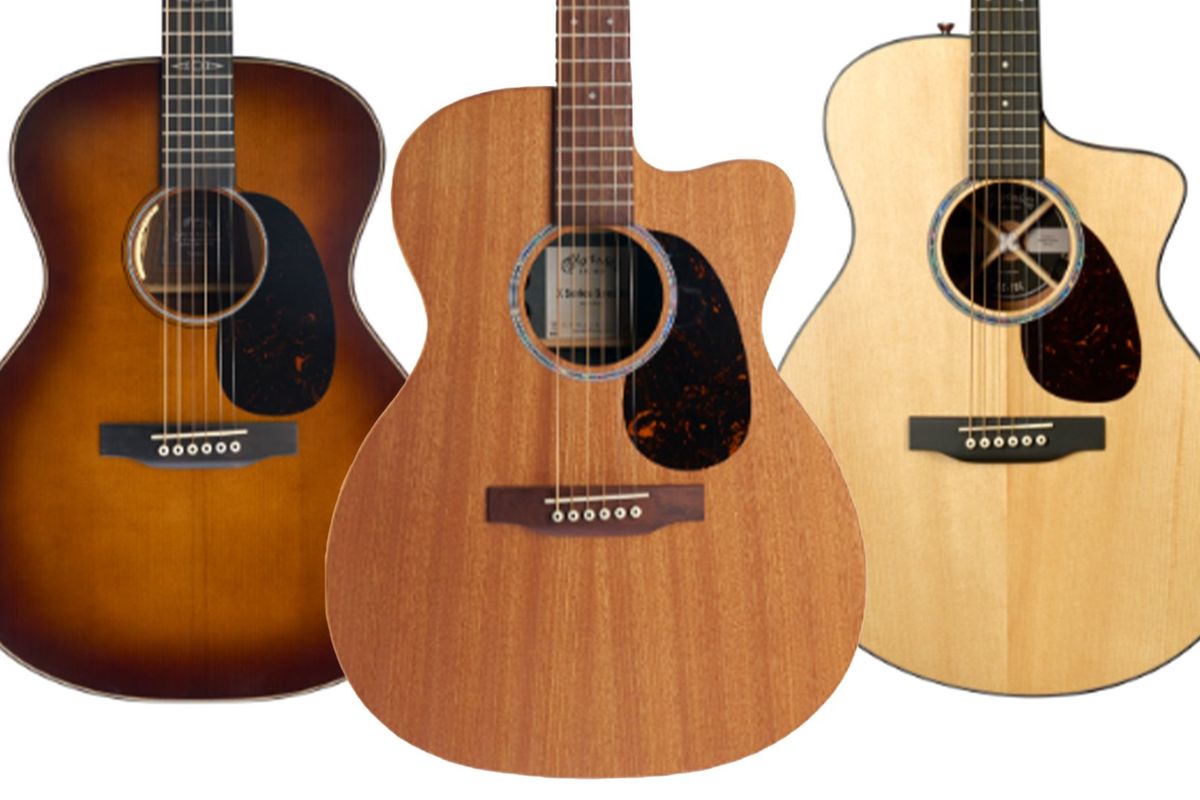
C. F. Martin & Co.® is proud to announce the release of five exciting new models that blend tradition with innovation and meet the needs of today’s diverse players. The launch includes a refreshed GPCE Inception Maple with a bold new gloss finish, the all-new non-cutaway GPE Inception Maple, two special X Series additions, and the SC-10E Spruce—a fresh take on Martin’s revolutionary SC design now joining the Road Series.
GPCE Inception Maple
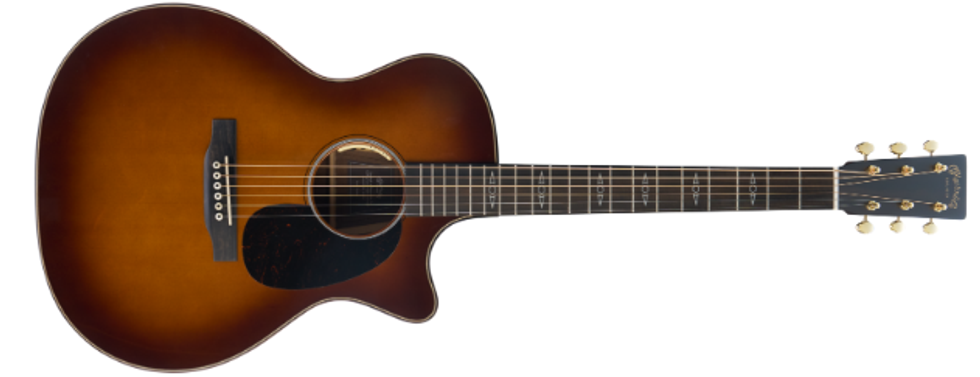
Martin’s game-changing Inception Series gets a visual and tonal upgrade with the refreshed GPCE Inception Maple. Now featuring a full-body gloss amber fade sunburst finish, this model blends cutting-edge acoustic design with FSC®-certified tonewoods. A European spruce top delivers bold projection and quick response, while flamed maple back and sides provide clarity and brightness, all balanced by a black walnut wedge. Skeletonized bracing and sonic channeling—purpose-built for this tonewood pairing—enhance both sustain and amplitude. With premium appointments like a satin black walnut neck, FSC-certified ebony fingerboard and bridge, and LR Baggs Anthem electronics, the GPCE Inception Maple proves that sustainability, innovation, and striking aesthetics can coexist in perfect harmony.
GPE Inception Maple
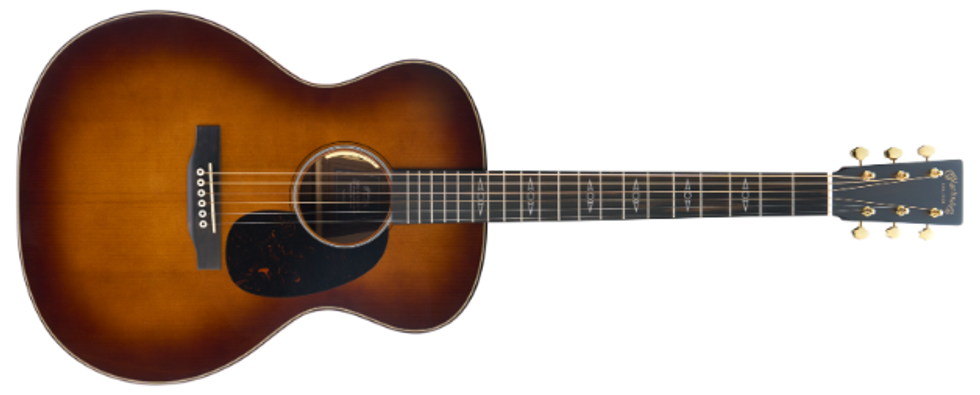
Also debuting is the GPE Inception Maple, which brings a non-cutaway Grand Performance shape to the Inception Series for the first time. Players will enjoy the same striking tonewood pairing, premium appointments, and Martin’s innovative bracing as the GPCE model—but with a full-body design for those who prefer a more traditional silhouette. It offers a crisp, balanced tone that’s effortlessly expressive, with the added visual punch and presence of its new gloss finish. Paired with LR Baggs Anthem electronics, this model delivers a truly dynamic and versatile acoustic-electric experience.
GP-X2E Ziricote Special
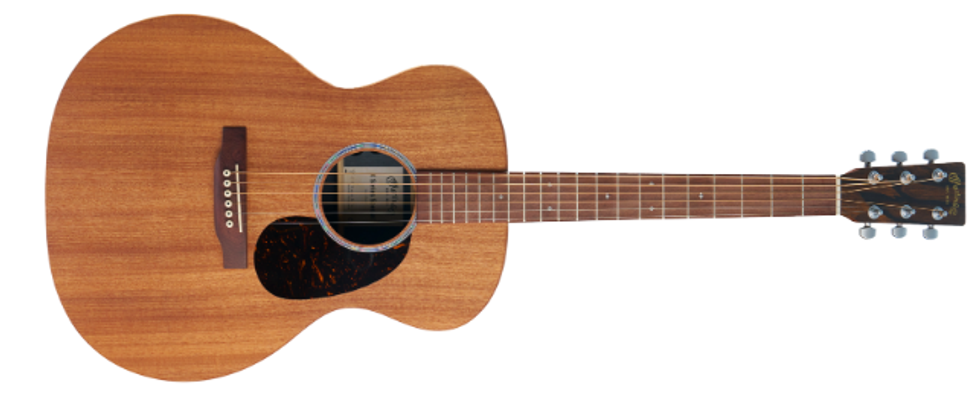
Expanding the X Series lineup is the GP-X2E Ziricote Special, a limited-time Grand Performance model that blends bold tone with player-focused features. With a solid sapele top and ziricote-patterned high-pressure laminate (HPL) back and sides, this guitar is durable, stylish, and responsive. The Performing Artist neck profile and high-performance taper ensure smooth playability, while Martin E1 electronics with a built-in tuner give you full control on stage or at home. It’s an affordable, road-ready companion for players of all levels.
OMC-X2E Ziricote Special
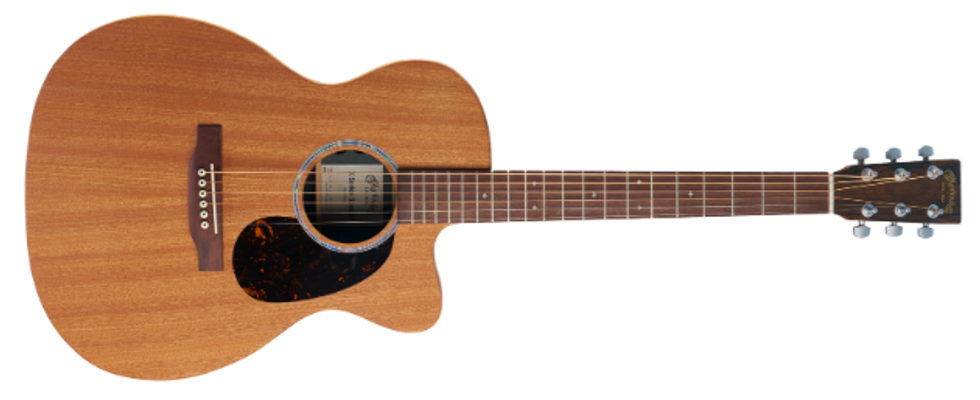
Also new to the X Series is the OMC-X2E Ziricote Special, offering the comfort of a 000 body with a 25.4" scale length for greater projection and sustain. Its cutaway design allows easy upper fret access, and like its Grand Performance sibling, it features a solid sapele top, ziricote-patterned HPL back and sides, and Martin E1 electronics with onboard tuning. This versatile model is ideal for fingerstyle players, singer-songwriters, and anyone looking for rich tone in a sleek, stage-ready package.
SC-10E Spruce
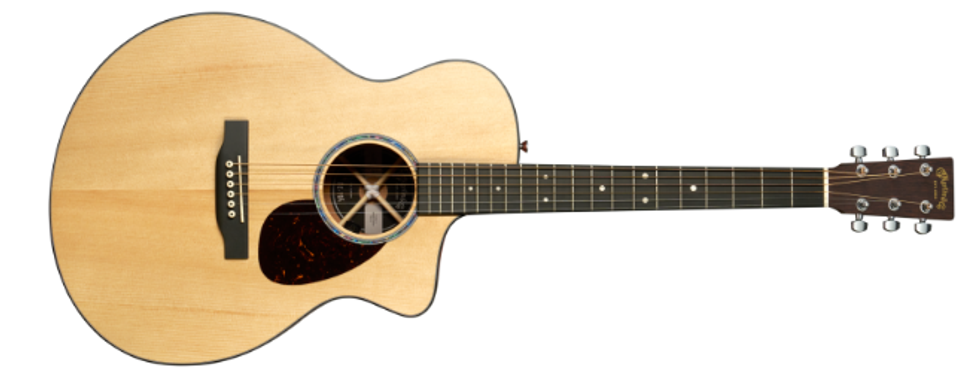
Rounding out this launch is the SC-10E Spruce, a new addition to Martin’s Road Series that brings the revolutionary SC body shape to even more players. With its patented Sure Align® neck system and Low Profile Velocity neck, it offers unmatched comfort and unrestricted access to every fret. The solid spruce top paired with solid sapele back and sides creates a balanced, dynamic voice that excels in any genre. Finished with Martin E1 electronics and a built-in tuner, this is a modern acoustic-electric built for the stage, studio, or wherever the music takes you.
For more information on these and other models from Martin, visit martinguitar.com.
EarthQuaker Devices Announces the Easy Listening Analog Amp Simulator
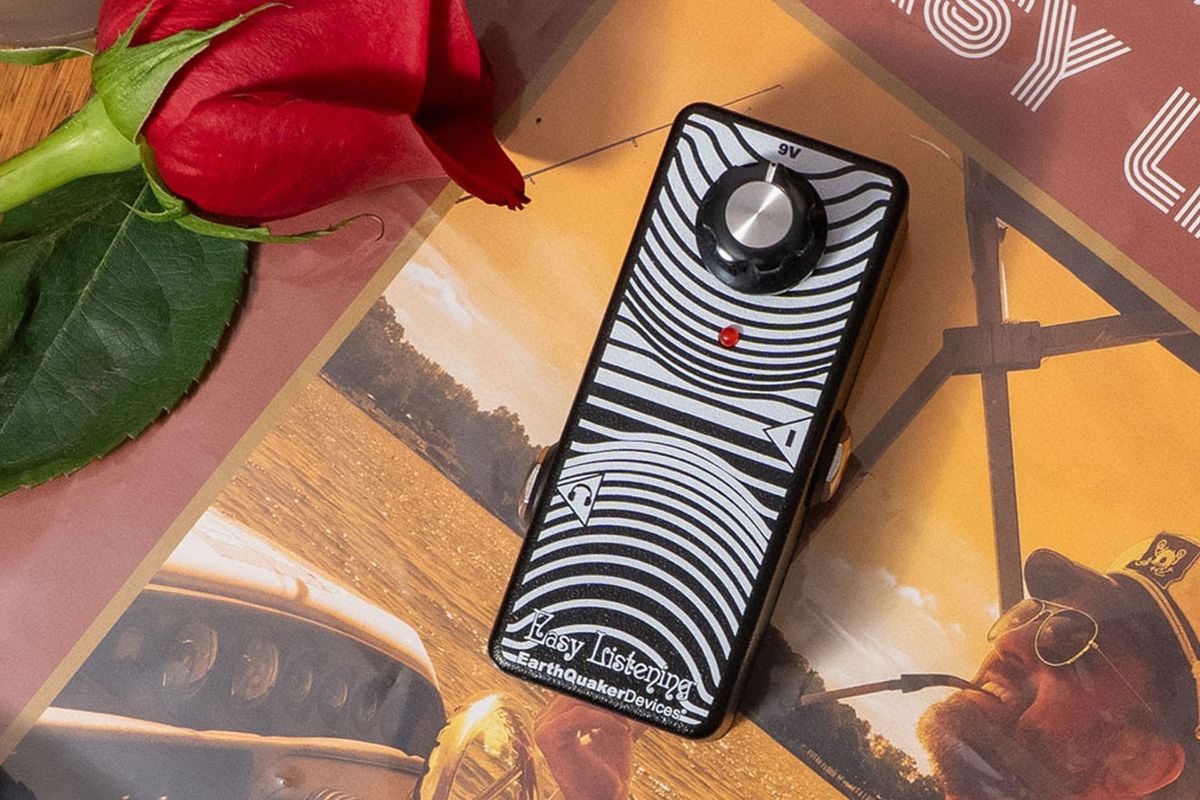
With its finely tuned preamp circuitry and sweet analog cabinet simulation, Easy Listening delivers a big, lush sound with zero latency and no harsh digital artifacts. Think of it as the perfect marriage of vintage tone and modern convenience, offering all the high headroom and low noise of an actual tube amp but small enough to fit in your pocket. No menu diving, no IR loading, and nothing else getting in between you and your tone. Whether you are using this as a headphone amp or the final stage before your recording interface for quick and easy amp-less recording, we think you’ll find this no fuss simulator a delightful addition to your tonal toolbox!
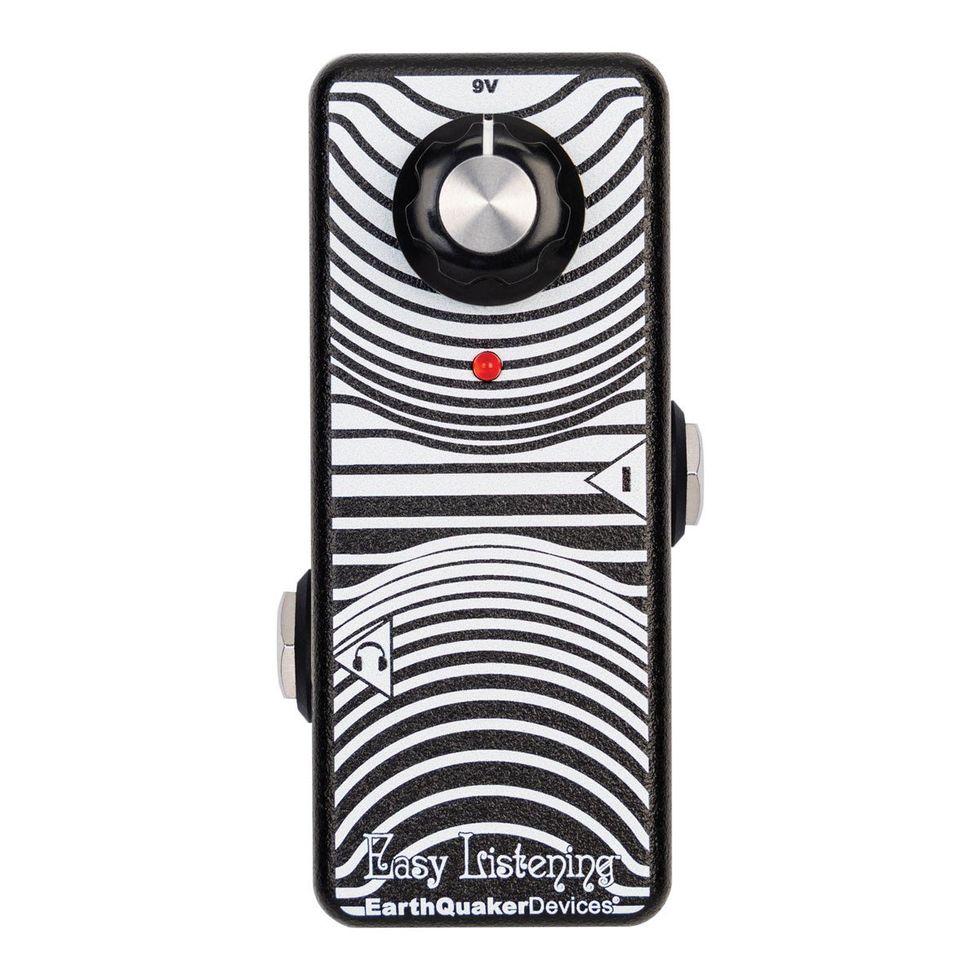
As the name implies, Easy Listening is as simple as it can be to operate, just one control for output volume and that's it. Internally, it's meticulously voiced to capture the soul of one of our favorite classic American guitar amps—a '65 Deluxe—with all the harmonic complexity guitar players crave. Its all-analog circuitry provides a more immediate feel with rich low-end resonance, slightly scooped mids, and that crystalline top end chime that makes electric guitars sing.
Designed with guitarists that use a lot of pedals in mind, Easy Listening features a high 1M input impedance and ample headroom to handle everything from vintage fuzz to modern stacked gain stages without breaking a sweat. The high-fidelity, low-noise analog class AB driver ensures you'll maintain every nuance of your tone at whisper-quiet headphone levels or tracking your sick riffs in your secret basement studio.
Each Easy Listening is built by a powerful robot and a whole bunch of delightful humans in the exotic former rubber capital of the world, Akron, Ohio USA.
Tech Specs:
- Input: Mono TS ¼"
- Output: Stereo TRS ¼" (Tip is the Left channel, Ring is the Right channel)
- Input Impedance: 1 MΩ
- Output Impedance: 39 Ω
- Current Draw: 75 mA
- For use with Headphones: Requires headphones with a ¼" TRS plug.
- For use with a DAW: You can use either a mono TS cable into one channel of your interface or a Stereo TRS cable with a splitter into two channels.
The Ultimate Les Paul: A Deep Dive into the Black Flat-Top Marvel Built for the Man Himself
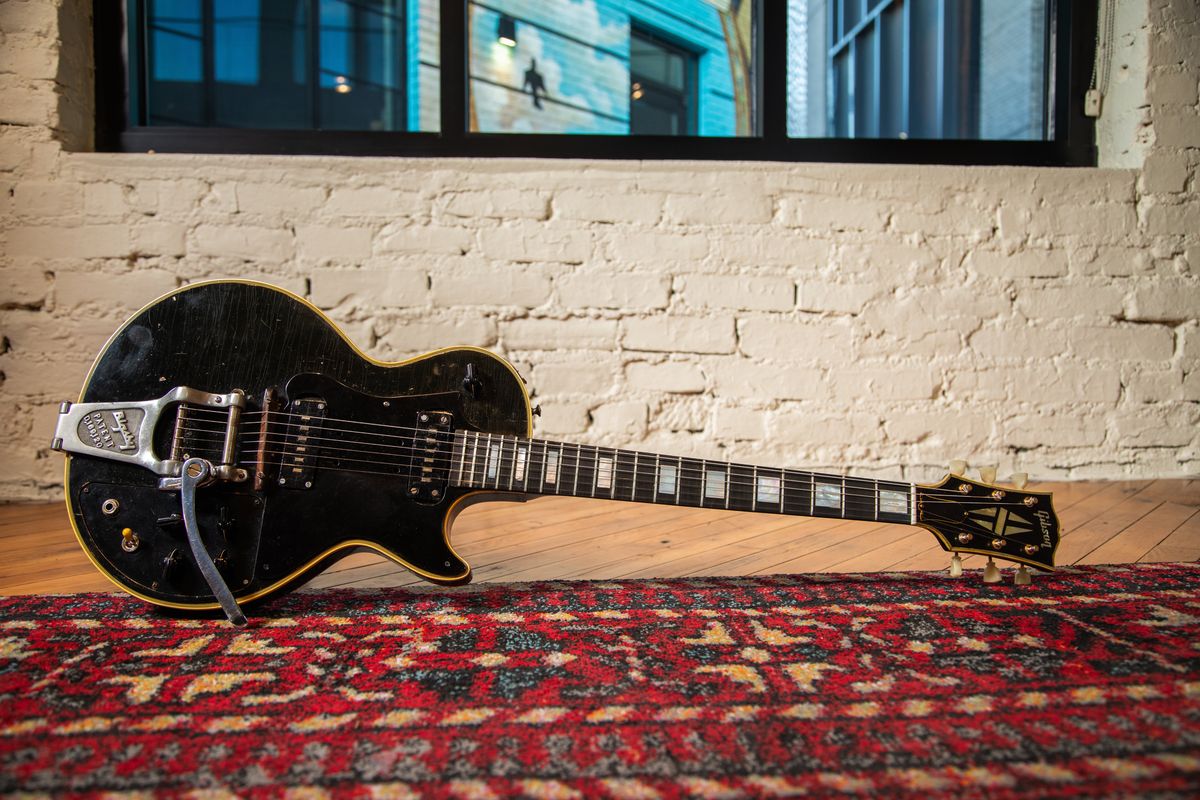
This LP prototype, likely built by Gibson in 1958, is a fascinating piece of the iconic guitar style’s lineage.
In the pantheon of electric guitar legends, few names resonate as powerfully as Les Paul. Not only did he lend his name to one of the most iconic guitars of all time, but he was also a relentless innovator—forever tweaking, refining, and reshaping his tools to chase the elusive perfection of tone. While many collectors and musicians have been captivated by his namesake production models, few have laid eyes on, let alone held, one of the true instruments crafted explicitly for Les Paul himself. This is the story of one such guitar: a custom-built black flat-top Gibson that was part of a rare twin set—crafted to meet the singular standards of a musical genius.
Les Paul’s relationship with the electric guitar wasn’t one of casual use or simple preference. He was a pioneer, deeply immersed in the mechanics of tone and sustain. His work not only revolutionized how guitars were made, but also how they were recorded and performed with. This particular instrument, one of two black flat-tops likely built in 1958 alongside a pair of white counterparts, was a tool in his quest—a quest that combined science, artistry, and an insatiable curiosity.
At first glance, the guitar seems understated. The black finish and flat-top construction suggest minimalism. But closer inspection reveals a level of design and detail that goes far beyond standard factory output. The body—a .25” maple cap atop a solid mahogany core—eschews the arched top and neck binding that many associate with high-end Gibsons of the era. It’s a design born from utility: flatter for increased contact, perhaps for Les’ recording techniques; unbound for ease of modification.
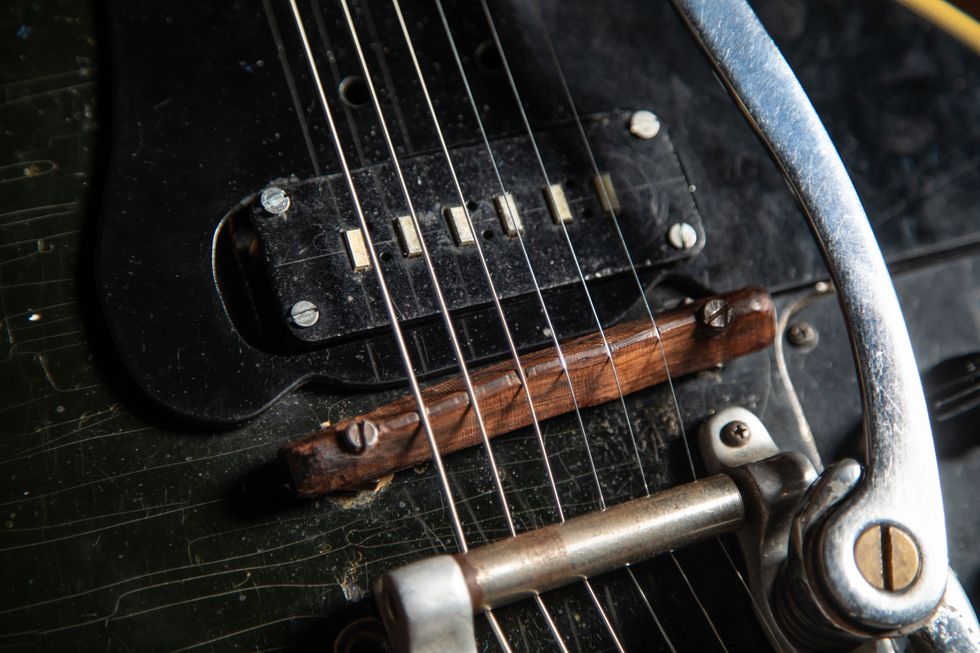
But it’s inside the guitar where things get really interesting. Deep pickup cavities hint at experimentation beneath the surface. The control cavity was uniquely routed for access from both front and rear—an unusual feature likely intended to make electronics swaps and tests easier. The headstock, too, bears the mark of purposeful divergence: elongated with a long taper behind the nut, enhancing string length and tension, possibly for sustain or tonal balance.
And then there are the modifications—refinements so specific they could only come from someone who viewed the guitar not as a finished product, but as a laboratory for sonic discovery. The pickups, Gibson’s low-impedance alnico “staple” style, were either wound by Les himself or by his son Gene. These pickups, with double-tall bobbins and a unique 4-screw mounting system, required a transformer to step up the impedance for direct input to an amp. AIR coils, reverse-wound for hum-cancelling, were mounted beneath the pickguard, beside each pickup. According to Les’ close friend and tech Tom Doyle, Les was using this technique in the late 1940s to get a quieter signal.
“The spirit of the guitar—Les’ spirit—remained intact. It’s not a sterile museum piece, but a living, breathing testament to a life spent chasing sound.”
In terms of playability, Les took matters into his own hands—literally. The neck profile was hand-shaped and refinished in black acrylic. The frets? Low, flat, and re-crowned using nothing more than flat files and emery boards—crude by modern standards, but a testament to Les’ commitment to hands-on craftsmanship. And the bridge? Carved by Les himself from wood, anchored with hefty .25" studs to improve energy transfer and sustain.
Another particularly unique feature is the missing 22nd fret. Removed deliberately, it allowed Les to move the neck pickup further up the body, balancing volume and tone as he climbed the fretboard—a mod unheard of at the time, and one that permanently altered the original pickguard. In true Les fashion, he crafted a new one, hand-shaped and signed on the back. That signature alone would make this guitar historic. The story it tells elevates it to something close to mythic.
Beyond the customizations and features, the guitar bears the marks of its life. It’s a well-played instrument, worn from hours of rehearsal, performance, and experimentation. The original finish has held up remarkably well, with only minor touch-ups. The neck, however, wears its black paint like a badge of honor—proof of Les’ own hand at work. A headstock break in the mid-1960s forced its early retirement from Les’ regular use. Yet even in its dormancy, it remained significant.
In 1974, the guitar changed hands through a trade, eventually resting in the possession of its most recent owner, Les’ friend and sound man Geoff Gray. It sat in storage for decades until its restoration began in 1998. The headstock was professionally repaired, and components like tuners, pots, and Bigsby were replaced with period-correct parts wherever possible. Importantly, the spirit of the guitar—Les’ spirit—remained intact. It’s not a sterile museum piece, but a living, breathing testament to a life spent chasing sound.
This guitar, with its unique blend of factory precision and raw, personal modification, represents the closest one can get to stepping inside Les Paul’s creative process. It’s not just a player’s guitar. It’s not just a collector’s trophy. It’s a physical manifestation of innovation. A rare portal into the mind of a man who changed the course of music history.
Offered most recently by Carter Vintage Guitars in Nashville for a cool $950,000, the guitar has since been sold. But its story continues to echo—a tone that, like Les himself, refuses to fade.
SOURCES: Carter Vintage Guitar interview with Geoff Gray, personal letter from Tom Doyle, October 2024.
Jackson Expands Its Signature Juggernaut Range With Misha Mansoor
Jackson is once again partnering with Misha Mansoor to release three new signature guitars, The Pro Series Signature Misha Mansoor Juggernaut HT6 in Red Crystal and Blue Sparkle and The Pro Plus Series Signature Misha Mansoor Juggernaut ET6 in Riviera Blue. Developed in close partnership with Misha, these Juggernaut metal guitars are built to withstand the demands of Misha’s steadfast and fleet-fingered technique. Perfect for both classic and progressive metal players, these guitars deliver the modern sound that every shredder needs to ignite their tone.
“This refresh came about because every few years we want to see what we can do…these guitars travel around the world and they need to be road ready,” said Misha Mansoor on his new signature guitars. “It’s a no nonsense guitar that looks good, sounds good, and plays good.”
Djent forefather, Misha Mansoor, has gained widespread acclaim as the mastermind behind the axe-centric progressive metal band Periphery. Based in Washington D.C., Periphery is renowned for pushing the limits of progressive metal, using detuned, extended-range instruments to craft a sound that is both technically complex and unapologetically heavy. Misha Mansoor, guitarist and producer, co-founded the band in 2005. With the same precision and innovation that defines Misha's playing, the Juggernaut signature gives players the power to transform their sound.
The premium Juggernaut models feature a 25.5” scale length, poplar body and bolt-on caramelized maple neck with graphite reinforcement, wrap-around heel and oiled back finish for greater playing comfort. With a 20” flat radius ebony fingerboard that features rolled edges, fans can enjoy blazing fast leads. These models feature 24 jumbo stainless steel frets and offset dot inlays. Lastly, the Luminlay
side-dots will guide the guitarist's path even on the darkest of stages, while the heel-mount truss rod adjustment wheel allows for convenient neck relief tweaks.
Misha worked closely, as he did with past models, to develop the exceptional uncovered direct-mount Jackson MM1 pickups. Unwilling to sacrifice tone, these pickups can be shaped with a five-way blade switch, single volume control, and a single tone control with push/pull feature that allows for players to engage or disengage tone options. Designed for articulate heavy picking, the humbuckers deliver a well-balanced sonic range with rich dynamics, intentionally left uncovered to enhance brightness and clarity.
The Pro Plus Series Signature Misha Mansoor Juggernaut ET6 comes equipped with an EverTune F6 Model bridge, engineered to maintain perfect tuning and intonation across the entire neck, even with low tunings. Its counterpart, the Pro Series Signature Misha Mansoor Juggernaut HT6, features a string-through-body hardtail bridge that delivers enhanced sustain, rock-solid tuning stability, and simplified string changes. Both bridges are built to withstand intense playing conditions, providing the unwavering stability essential for Misha's signature heavy metal style.
“We’re beyond thrilled to be partnering with Misha Mansoor on his latest signature guitar collection. His innovation and vision perfectly align with our passion for pushing the boundaries of tone and design,” said Jon Romanowski, VP of Product of Jackson Guitars. “This collaboration reinforces Jackson’s commitment of providing for players who demand nothing but the best.”
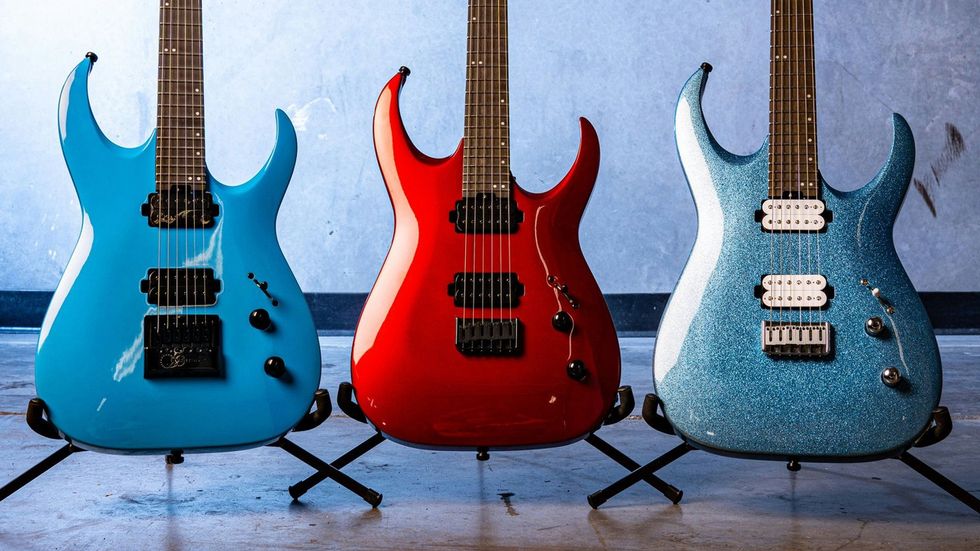
PRO SERIES SIGNATURE MISHA MANSOOR JUGGERNAUT HT6 ($999.99 USD, £949 GBP, €1,149 EUR, $1,899 AUD, ¥165,000 JPY) The Pro Juggernaut HT6 offers a Jackson HT6 string-through-body hardtail bridge, Jackson sealed die-cast locking tuners, Dunlop® dual-locking strap locks and a gig bag. It’s available in Red Crystal or Blue Sparkle with a matching reverse Jackson 3x3 AT-1 headstock.
PRO PLUS SERIES SIGNATURE MISHA MANSOOR JUGGERNAUT ET6 ($1,399.99 USD, £1,399 GBP, €1,649 EUR, $2,599 AUD, ¥231,000 JPY) The Pro Plus Series Signature Misha Mansoor Juggernaut ET6 features an EverTune® F6 Model bridge that will keep your guitar perfectly in tune and intonate all the way up the neck to handle low tunings. This 6-string Juggernaut is wrapped in a statement- making Riviera Blue finish with a color matched reverse Jackson 3x3 AT-1 headstock and black hardware. It also features Dunlop® Dual-locking strap pins for maximum stability.
PRS S2 Special Semi-Hollow Review
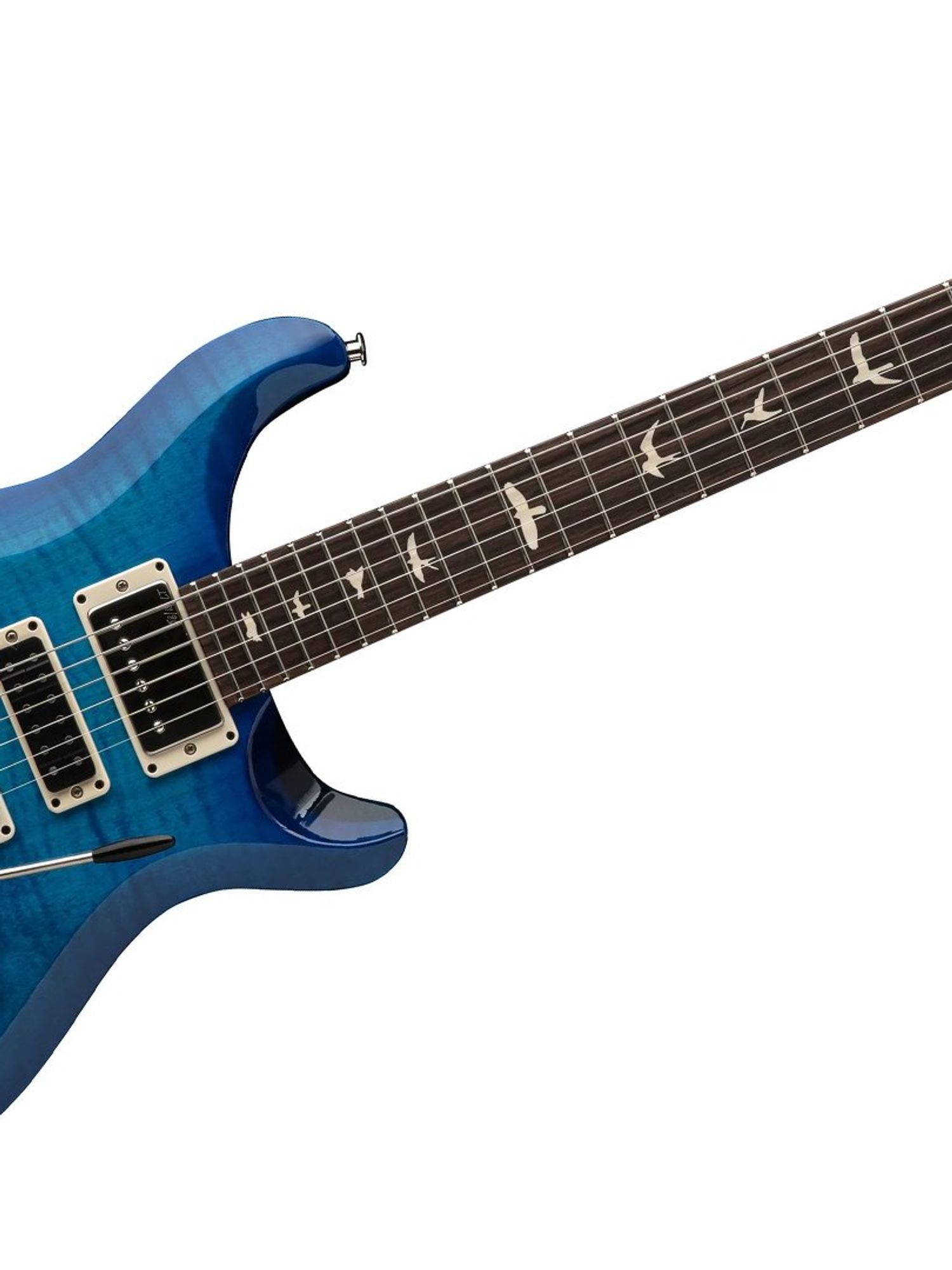
If you’re not well-versed in the structure of PRS’s expansive lineup, the S2 instruments might seem to occupy a curious place in the line. They offer a more affordable path to U.S.-made PRS guitars. But to the uninitiated, the S2 Series can seem nearly as fancy as the Core series in many respects, and the guitars are generally distinguished by less ornate top woods than anything else. When it comes to playability and craft, you’re definitely not sacrificing much. So it goes with this new S2 Special Semi-Hollow.
It’s been just shy of three decades since the first semi-hollow PRS came out, and they remain very appealing and intriguing instruments. The semi-hollow construction offers a truly different voice and feel, and the extra airspace is definitely heard and felt in this new S2 Special Semi-Hollow. It’s built with full-size 58/15 LT humbuckers in the neck and bridge positions , plus a Narrowfield pickup in the middle, which creates a bounty of voices via a 5-way blade switch and coil taps. With a PRS Patented Tremolo and Phase III locking tuners in the mix, the new S2 Special Semi-Hollow is pretty much ready for anything.
Bird Brain
The S2 Special Semi-Hollow is capped by a top made of figured solid maple, with a body fashioned from chambered solid mahogany. It features an asymmetrical bevel around its edges rather than the gently arched top of violin-carve PRS models. That’s a cost-saving element, but it also makes its own stylistic statement and may well lend something unique to the guitar’s voice in certain situations. The chambering brings the otherwise beefy construction in at around 7.4 pounds (a spec that’s likely to vary somewhat from guitar to guitar).
The glued-in mahogany neck is topped with a 22-fret rosewood fretboard with traditional PRS bird inlays. It’s carved to the company’s long-standing Pattern Regular profile (more PRS-speak for a rounded C carve that should be comfortable for most hands). Further cost savings are achieved via the scarfed headstock and heel joint. Specs-wise, the neck is built around PRS’s signature dimensions: a 25" scale length, 10" fingerboard radius, and a nut width of 1 21/32", which famously represents a middle ground between Fender and Gibson specs.
PRS applies a high-gloss nitro finish to the model—a brilliant lake blue on our test guitar that really makes the subtly flamed maple top pop. Black amber, dark cherry sunburst, faded gray black purple burst, faded gray black blue burst (say that 10 times fast), and fire red burst are also available, all with either matching or complementary headstocks. The nickel-plated hardware should hold no great surprises for PRS aficionados: the floating PRS Patented Tremolo is one of the smoother and more successful evolutions of the original Fender Stratocaster vibrato concept from 1954, and the Phase III locking tuners are a proven and time-tested component.
Sound View
The S2 Special Semi-Hollow’s sonic capabilities are broad thanks to the complement of electronics, including the three Maryland-made pickups. The popular 58/15 LTs live unmistakably on the vintage PAF-style pickup spectrum. Both have dedicated mini-toggle coil-tap switches, and the front pickup is reversed from the standard orientation, putting the coil with the adjustable poles on the bridge side simply because, as PRS tells us, “We tested the pickups in both orientations and simply preferred it in this setting.”
Between them is a Narrowfield humbucker that’s only used for the Stratocaster-like 2 and 4 positions on the 5-way blade switch, which means you still get the neck-and-bridge combination that many three-pickup guitars leave out. Between the 5-way and the dual mini-toggles, there are 12 pickup selections in total, all governed by master volume and tone controls.
If the S2 is the “stripped-down” entry to PRS’s USA-made guitars, there’s no evidence of it in the fit and finish, which is what we’ve come to expect from PRS. Sure, it lacks the maple faux-binding around the body top and the bound fingerboard that bring the bling to fancier models, and the birds are acrylic rather than mother of pearl or abalone, but it’s all very well put together and is perfectly playable right out of the included gig bag.
Triple Threat
Hooked up to a Tone King Falcon 1x10, a Bassman head and 2x12 cab, and a Fractal FM9 modeler, the S2 Special Semi-Hollow proved flexible and adaptable to many amps and musical styles. Output from the 58/15 LT humbuckers generally walks the line between clarity and articulation in clean and edge-of-breakup tones and the warmth and thickness of vintage-wind humbuckers. With overdrive, they still bite and wail with the same sense of balance, bending to whatever gain and saturation you throw at them without losing their essence.
It’s a truism of sorts that split humbuckers never quite sound like single-coils, but PRS has gone a long way toward rectifying that by adding a resistor between the deleted coil when you throw each pickup’s mini-toggle—leaving a little of the dumped coil-in signal to fatten the tone slightly. The result still might not sound exactly like a good Telecaster or Stratocaster pickup, but it’s an excellent representation of those tones when the songs demand it, and I’m doubtful anyone in the audience will protest the difference at your next gig. The real secret sauce, however, comes from the Narrowfield in the middle position. And although you never hear it on its own, it pairs well with either pickup in full or tapped mode to help nail those funky, scooped, wiry, in-between sounds. While the ability to flick among so many tones is a pleasure, it can feel fiddly jumping between favorite settings on the fly, but that seems like a small price to pay for this much utility.
The Verdict
Top marks are due to PRS for packing so much versatility into the S2 Special Semi-Hollow. Construction quality, fit, and finish are all exceptional as well, and if the contemporary looks and mixed-triple-pickups suit your tastes, the more accessible, if still significant, $2,599 price will represent real value to the right player.
PRS S2 Special Semi-Hollow Electric Guitar - Lake Blue
S2 Special Semi-Hollow, Lake Blue
New Danelectro in Metal Flake and Glitter Finishes!
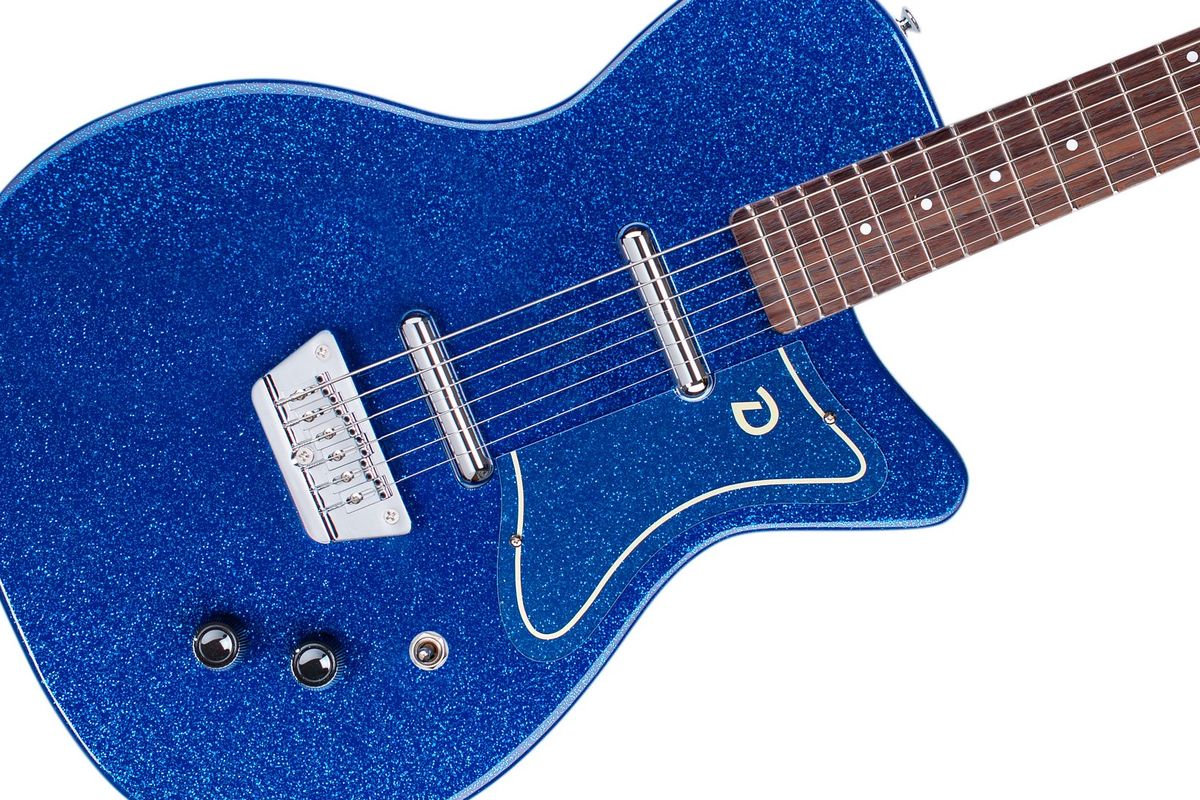
Grab a Dano and step into the spotlight! Adding an eye-catching flair to iconic models, Danelectro has introduced new Metal Flake and Glitter finishes to three of its best sellers.
BIG SITAR
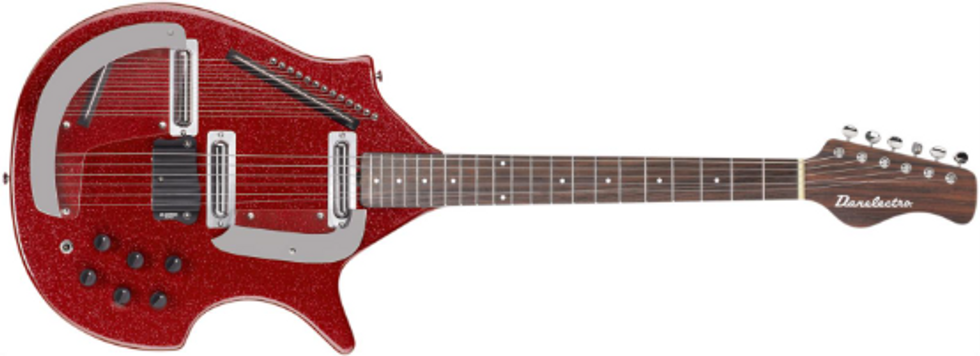
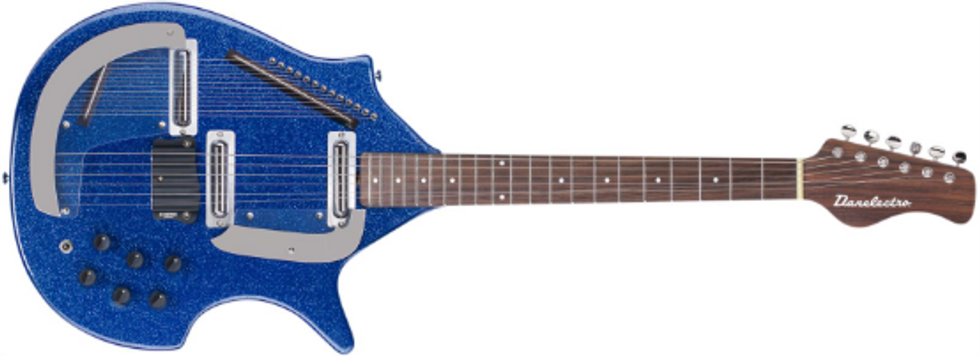 Originally introduced in the 1960s, Danelectro’s Big Sitar appears on thousands of recordings. Its shape is instantly recognizable, as is its sonic imprint: this instrument jumps out in every musical setting! The new Metal Flake models continue the legacy, with 21 frets on a 24.75” scale neck, and three single coil lipstick pickups in the bridge, neck, and mini-harp positions.
Originally introduced in the 1960s, Danelectro’s Big Sitar appears on thousands of recordings. Its shape is instantly recognizable, as is its sonic imprint: this instrument jumps out in every musical setting! The new Metal Flake models continue the legacy, with 21 frets on a 24.75” scale neck, and three single coil lipstick pickups in the bridge, neck, and mini-harp positions.
SINGLE CUT BARITONE

Guitarists and bassists alike have fallen in love with this bari. Its 29.75"-scale neck, two lipstick pickups and B to B tuning hit a sweet spot, both in feel and tone! Now dressed in a great Blue Metal Flake finish, this instrument blends retro appeal – with its “Dolphin” headstock and deco stylings – and spotlight-worthy attitude.
CLASSIC ’59
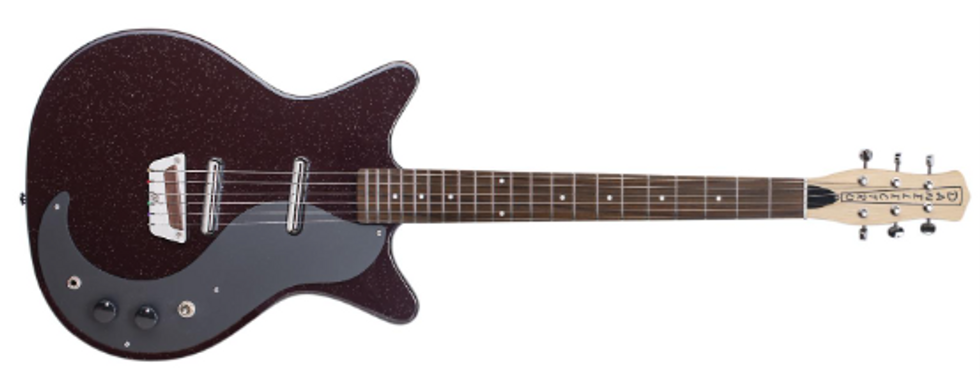
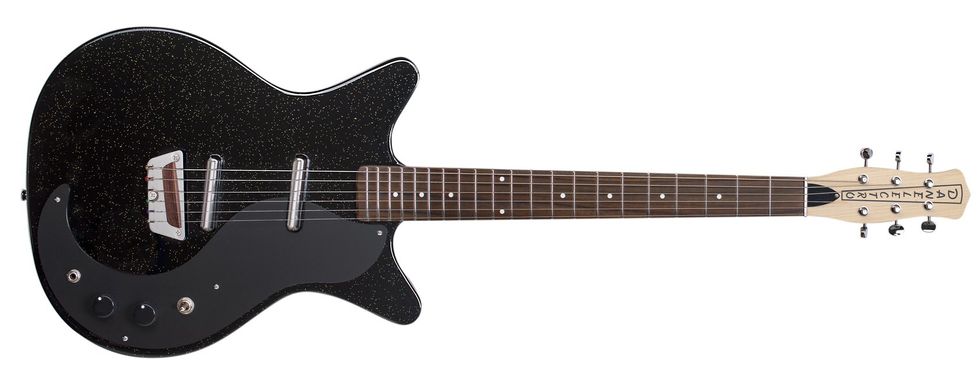
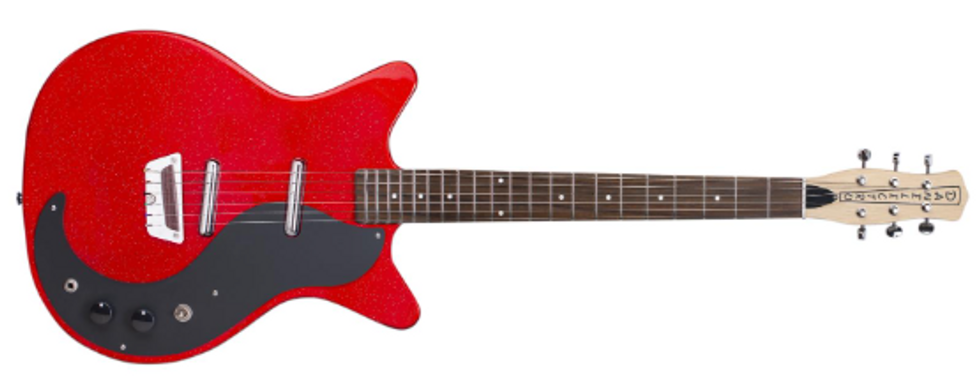
Danelectro’s most famous model gets an ultra-classy treatment with three new finishes, all with black pickguard and black side tape. It’s a perfect complement to the ‘59’s timeless shorthorn shape, “bottle” headstock, 21-fret 25” scale neck and original rosewood saddle bridge. Of course, a pair of lipstick pickups deliver the inimitable Danelectro tone.
For more information visit danelectro.com.
Amp Man’s Guide to Buying a Tube Amp
The longtime author of PG’s popular Ask Amp Man column—and one of the godfathers of the low-power-amp revolution with Budda and then EAST—returns to outline everything you need to know about tracking down the valve-propelled sound machine of your dreams.
In the immortal words of the Byrds:
“So you want to be a rock and roll star? / Then listen now to what I say.
Just get an electric guitar / then take some time and learn how to play.”
But you’re also going to need an amplifier! And if you’re following the Byrds’ protocol, you want a tube amp. These are the amps that voiced all the classic music that made history and still stands the test of time. Finding your ideal tube amp can be a never-ending search, but here are a few tips that may help you get started in your search for tube-amp nirvana.
What do you expect from your amp? Do you want the amp to have a good clean sound as well as the gain you need for solos? If so, then you may want an amp with channel switching, enabling you to footswitch between beautiful clean rhythms and a powerful overdriven solo assault. Some control options to look for here: Does the amp have the ability to alter the tone of the clean and overdrive channels? Sometimes the two channels sound noticeably different, depending on the amp design. Some form of tone control—typically 2- or 3-band EQ—for each channel can help. Also, an added bonus might be a separate master volume control for the clean channel. This would allow you to crank up the gain to give you some nice crunch for your rhythm playing, while setting your overall crunch volume to match the overdrive channel.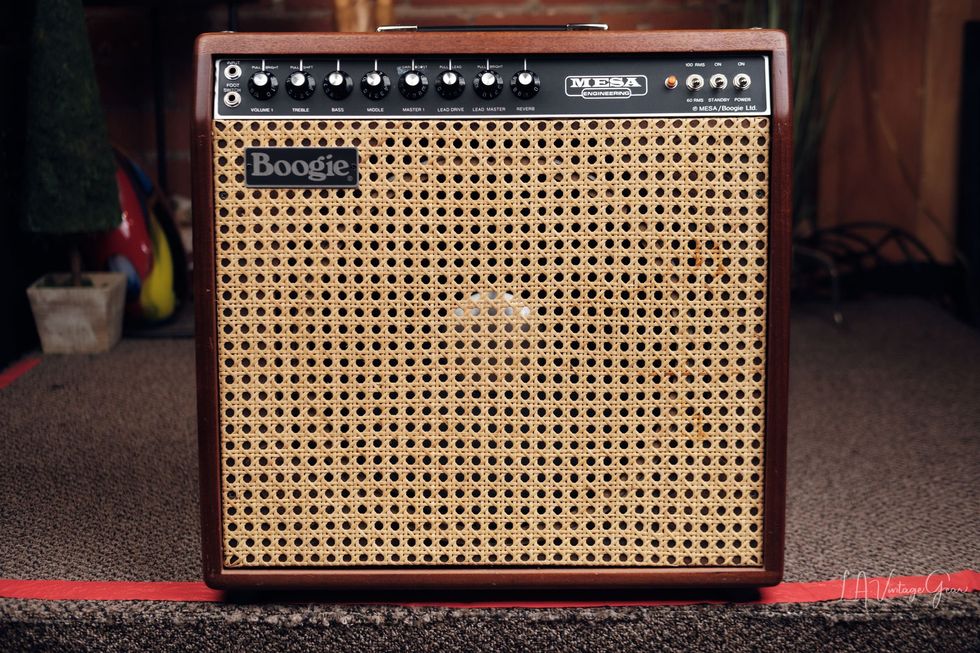
If you get most of your tones from pedals or maybe a multi-effects unit, then you probably won’t need channel switching and you may be best served with an amplifier that has a single channel and a simple control set. In this case, less is more, and the cleanest signal path will give your effects the opportunity to shine. A volume control and some form of tone shaping are all you’ll probably need. A good thing to remember is that many amps that have a lot of front-end gain don’t leave a lot of headroom for pedals. You might want to ask: “Does this amp take pedals well?”
“A tube amp is like a car; occasionally, it will need service.”
Know the difference between gain and volume. A gain control typically controls the amount of gain developed in the front end or preamp section of the amp. This is where most of the overdrive in the amp is developed. The volume control sets the overall loudness of the amp. A low-gain, high-volume setting equals a cleaner tone. A high-gain, low-volume setting equals a more overdriven tone. This is not the only way, however, to get an overdriven sound from an amplifier. Pushing the output tubes into distortion is also an option and has often been done both onstage as well as in the studio. So next….
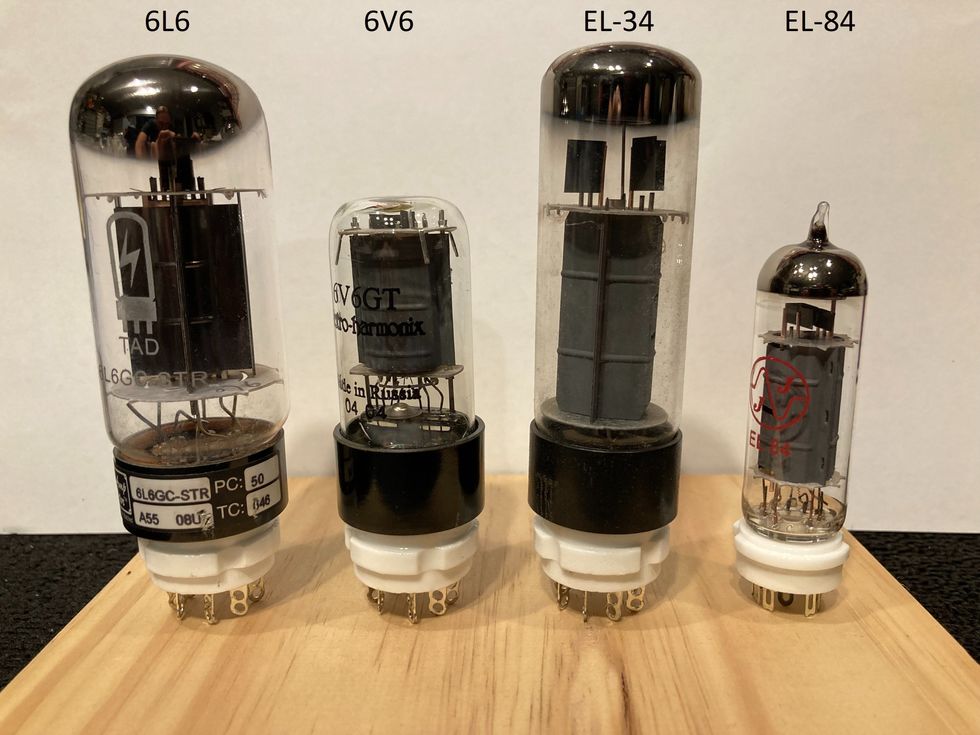
Consider the output power of the amplifier based on where you might be playing it. Most of us, nowadays, don’t need a 100-watt amp, or even a 50-watt amp, to play most venues. I currently play an EAST Duality 30—a 30-watt amp with a half-power mode, and 90 percent of my gigs are done at half power—with a six-piece band with two guitar players. It really doesn’t make sense to pay the increased cost of a 100- or 50-watt amp if you’re never going to need all that power. Tube amplifiers sound the best when the output tubes are being pushed a bit ... or a lot! In fact, many classic solos were done in the studio with a low-powered amp pushed to its limits. Fender tweed Champs and tweed Deluxes seem to shine at this, although there are definitely a few Gibson amps from the ’50s and ’60s that will give them a run for the money! If you happen to encounter a ’50s or ’60s tweed Fender or a Gibson, I would suggest plugging in. Are you gonna get Metallica? No. Are you gonna get Neil Young? All day long! The Fenders of this era have been pretty costly for a while now, but the Gibsons seem to be just catching up. Would these be good as a first amp and give you everything you want? In most instances, no, but as you get some time under your belt as a guitar player, you may appreciate these for what they are. They actually do become another instrument under your control.
“The option of different speaker cabinets with different speakers and configurations can go a long way to tailoring your sound to the gig and venue.”
There is no “best” amp, just the best amp for you! So what output tubes should you consider? Let’s get familiar with the basic types of output tubes first; then we can explore how they’re different. In Photo 1, we see the four basic types of output tubes: 6L6, 6V6, EL34, and EL84. The first two were typically used in the American-produced amps of the ’60s and ’70s. The latter two were their counterparts (more or less) and used in European amps built during this period. After a while, they started to cross pollinate and, especially in the U.S., you could find amps being built with all of these types of tubes. Because of that, you need to take into consideration what type of material you play, as they each have their own tonal characteristics.
If you’re into a classic rock or blues tone, that tone typically has more pronounced midrange content. This, in a broad-stroke kind of way, typically comes from an EL84- or an EL34-based amplifier. These output tubes typically have a more prominent and smooth midrange. If you’re more into hard rock/metal tones, a 6V6- or a 6L6-based amp may serve you better, as these output tubes typically have less midrange content with a more present top and bottom end, making it easier to establish the mid-scoop sound necessary for this music.
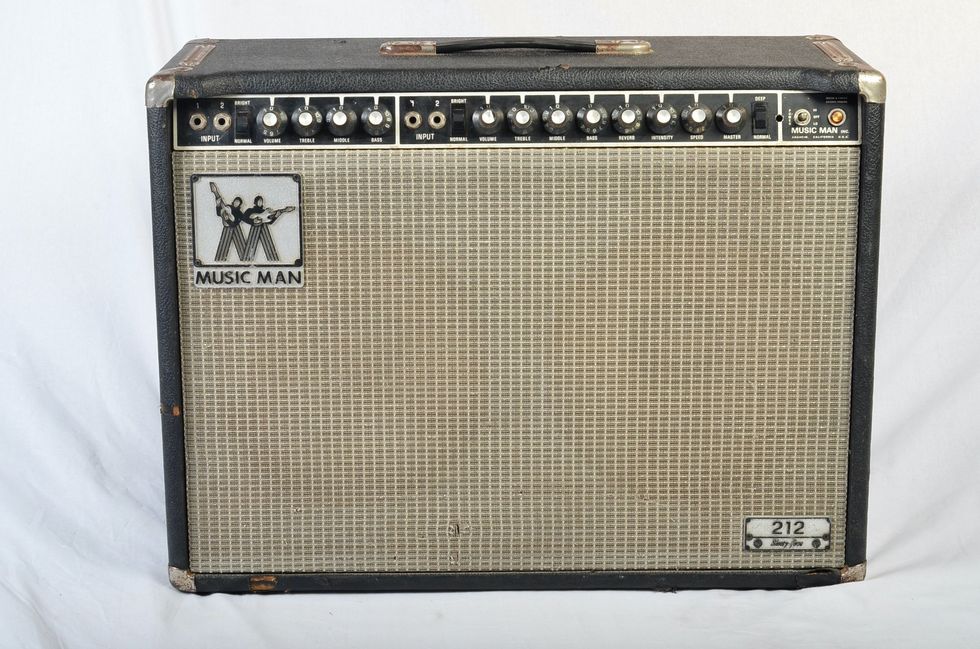
What about hybrid amps? There are some amps out there that only have a tube or tubes in some part of their design. As far as I know, this started with the Music Man line of amplifiers in the ’60s, which had a solid-state front end and a tube output stage. Later, Fender and Marshall started offering amps with one preamp tube in the preamp stage with all other stages of the front end and output stage being solid-state. These amps certainly have less maintenance involved regarding tube replacement and can sound fine if they give you the sound you’re looking for, but personally I don’t categorize these as tube amps.
“An open-back speaker cabinet or combo will tend to fill the area around it with a more ambient type of sound, almost 3-D.”
And speaking of maintenance. A tube amp is like a car; occasionally, it will need service. Output tubes are the tubes that wear out sooner and will need to be replaced more often than preamp tubes. These are the tubes that run the hottest and provide the power to the speaker through an output transformer. Depending on the time of use as well as amount of volume, a typical rule of thumb for replacement of output tubes is six months to two years. That’s not to say that I haven’t seen tubes last 30 years, but if you’re gigging a good bit, you want your amp to be reliable. Another point to be aware of here is that most tube amps will require new output tubes to be biased when installed in the amp. There are exceptions, however. Many amps that use EL84-style output tubes are designed with what’s called cathode bias or self-biasing, where the circuit allows the tubes to find their own bias point. Other amps, such as most Mesa/Boogies, are designed with what’s known as a fixed-bias circuit, so no bias adjustment is possible. This is why they recommend purchasing only their branded output tubes, because they are selected to run within their chosen bias range. Personally, I have seen and serviced many amps with a variable bias control added so that any brand of tube can be properly biased. Either way, your amp may occasionally need a trip to your local experienced tube amp tech for a tube replacement, bias, and overall checkup. It’s worth it to keep it at the top of its game.
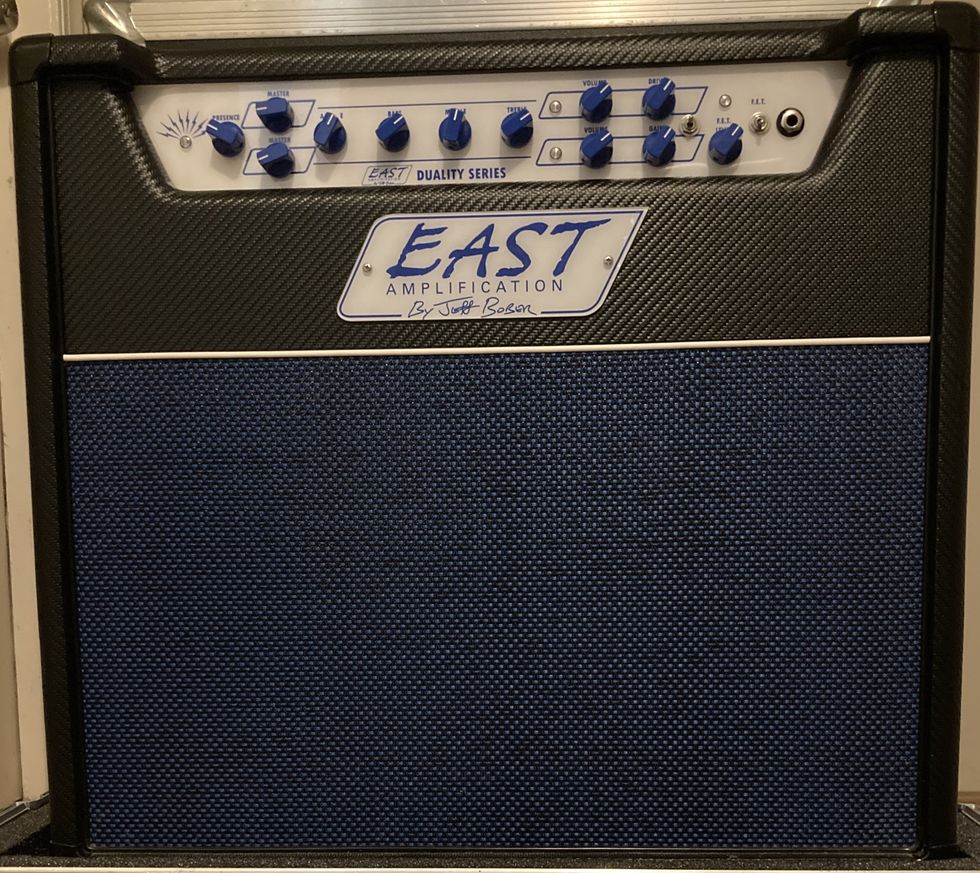
Do you want a head or a combo? A combo is the easiest transportation option. If, say, you live in a city and you believe most of your gigs will require a grab-n-go option, a cab or Uber ride to the gig will be best served with your guitar in one hand and your amp in the other. If, on the other hand, you have the option of packing your own vehicle, you may want to consider a head and cabinet. Having this setup leaves you many options with regard to speakers and cabinets. While the amplifier is substantially responsible for your overall tone, the option of different speaker cabinets with different speakers and configurations can go a long way to tailoring your sound to the gig and venue. One thing to consider here is that because of all the internal vibration that occurs in a combo, it may require more frequent replacement of the tubes. Tubes are, after all, an electro-mechanical device, and vibration can affect their structural integrity.
“If you get most of your tones from pedals or maybe a multi-effects unit, then you probably won’t need channel switching and you may be best served with an amplifier that has a single channel and a simple control set.”
An open- or closed-back speaker cabinet? This choice can go a long way to getting the sound you’re looking for. An open-back speaker cabinet or combo will tend to fill the area around it with a more ambient type of sound, almost 3-D. This is especially great in a lower-powered amp, because it will help fill the stage without being overly loud. These typically don’t have much in the way of low-end sound. If you’re looking for that low-end thud, then you definitely need to focus on a closed-back cabinet. A closed-back cabinet is also much more directional, as all of the sound is coming directly from the front of the cabinet.
To loop or not to loop? Although this pertains to solid-state amps as well, it’s worth addressing here as it applies to tube amps. As I mentioned above, if you get most of your sounds from pedals or multi-effects, then you may not need an effects loop because all your overdrive, fuzz, compression, and time-based units such as chorus, delay, flange, phase, etc., are all hitting your amp through the guitar input on the front panel. If you prefer to get both your clean and overdriven sounds primarily from the amp, then you’re more than likely using a channel-switching amp. In this case, you should definitely look for an effects loop option. The reason being that the sound of time-based units changes drastically when the overdrive channel of an amp is engaged. The extra gain almost always overexaggerates the level of these effects to the point where they become overwhelming. With these types of amps, any of your gain-based units (fuzz, overdrive, compression, boost) can be connected to the guitar input of the amp, but all of your time-based units should be connected through the effects loop. The level of the signal is typically much more consistent here, so the effects levels should not vary much.
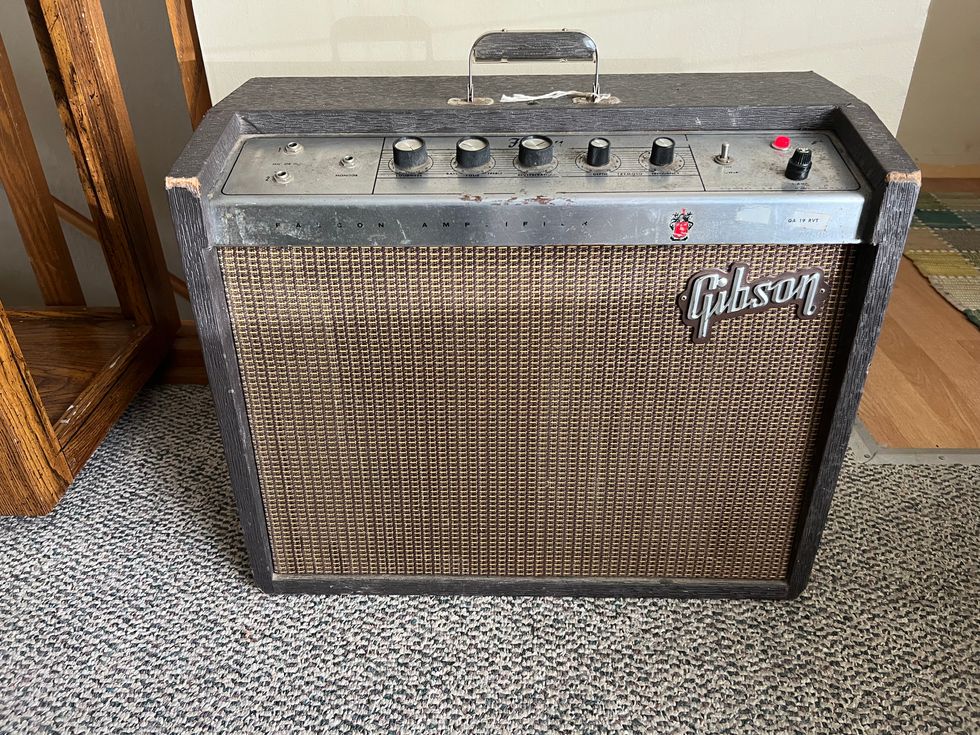
Hand-wired or circuit board? This is a question that you may not have even thought of, and that’s just fine. Some folks may prefer one over the other, so let’s take a minute to explore both. Of course, the first amplifiers ever built were hand-wired because circuit boards did not exist in the ’30s and ’40s. All the resistors and capacitors were soldered directly to a chassis-mounted component or to a chassis-mounted terminal strip. As time went on, eyelet boards and terminal boards were developed so that components could be mounted directly to these boards, and then wire leads would be used to connect these boards to all the chassis-mounted components such as the pots, tube sockets, jacks, etc. This is how all the early Fender and Gibson amps were built. Then came circuit boards, where not only the components were mounted but a good bit of the wiring itself was part of the board in the form of circuit traces, which are actually flat copper wire attached to the board itself. The earliest examples of circuit board amps I can remember were the early ’60s Ampeg amps. Nowadays, most amps are built using circuit-board technology because it can largely be automated, with everything from component placement through soldering being done by machines.
So what’s the difference? Some players feel that a hand-wired amp just sounds better. Some feel they’re more reliable. Some feel that circuit board amps are more consistent from amp to amp because the build is exactly the same each time. All this can be true, but the bottom line is that it’s not all that important. The fact that is important remains if it’s the right amp for you. When you plug into the amp, do you hear what you want to hear? Does it make you want to play? Are you struggling to find a sound, or does it easily get you where you want to be? These are the most important things to ask yourself. Price point is probably next, but if it’s an amp that you really bond with, and it lets you get the sound you hear in your head, then it’s probably the amp for you!
Amp Man’s Guide to Buying a Tube Amp
The longtime author of PG’s popular Ask Amp Man column—and one of the godfathers of the low-power-amp revolution with Budda and then EAST—returns to outline everything you need to know about tracking down the valve-propelled sound machine of your dreams.
In the immortal words of the Byrds:
“So you want to be a rock and roll star? / Then listen now to what I say.
Just get an electric guitar / then take some time and learn how to play.”
But you’re also going to need an amplifier! And if you’re following the Byrds’ protocol, you want a tube amp. These are the amps that voiced all the classic music that made history and still stands the test of time. Finding your ideal tube amp can be a never-ending search, but here are a few tips that may help you get started in your search for tube-amp nirvana.
What do you expect from your amp? Do you want the amp to have a good clean sound as well as the gain you need for solos? If so, then you may want an amp with channel switching, enabling you to footswitch between beautiful clean rhythms and a powerful overdriven solo assault. Some control options to look for here: Does the amp have the ability to alter the tone of the clean and overdrive channels? Sometimes the two channels sound noticeably different, depending on the amp design. Some form of tone control—typically 2- or 3-band EQ—for each channel can help. Also, an added bonus might be a separate master volume control for the clean channel. This would allow you to crank up the gain to give you some nice crunch for your rhythm playing, while setting your overall crunch volume to match the overdrive channel.
If you get most of your tones from pedals or maybe a multi-effects unit, then you probably won’t need channel switching and you may be best served with an amplifier that has a single channel and a simple control set. In this case, less is more, and the cleanest signal path will give your effects the opportunity to shine. A volume control and some form of tone shaping are all you’ll probably need. A good thing to remember is that many amps that have a lot of front-end gain don’t leave a lot of headroom for pedals. You might want to ask: “Does this amp take pedals well?”
“A tube amp is like a car; occasionally, it will need service.”
Know the difference between gain and volume. A gain control typically controls the amount of gain developed in the front end or preamp section of the amp. This is where most of the overdrive in the amp is developed. The volume control sets the overall loudness of the amp. A low-gain, high-volume setting equals a cleaner tone. A high-gain, low-volume setting equals a more overdriven tone. This is not the only way, however, to get an overdriven sound from an amplifier. Pushing the output tubes into distortion is also an option and has often been done both onstage as well as in the studio. So next….

Consider the output power of the amplifier based on where you might be playing it. Most of us, nowadays, don’t need a 100-watt amp, or even a 50-watt amp, to play most venues. I currently play an EAST Duality 30—a 30-watt amp with a half-power mode, and 90 percent of my gigs are done at half power—with a six-piece band with two guitar players. It really doesn’t make sense to pay the increased cost of a 100- or 50-watt amp if you’re never going to need all that power. Tube amplifiers sound the best when the output tubes are being pushed a bit ... or a lot! In fact, many classic solos were done in the studio with a low-powered amp pushed to its limits. Fender tweed Champs and tweed Deluxes seem to shine at this, although there are definitely a few Gibson amps from the ’50s and ’60s that will give them a run for the money! If you happen to encounter a ’50s or ’60s tweed Fender or a Gibson, I would suggest plugging in. Are you gonna get Metallica? No. Are you gonna get Neil Young? All day long! The Fenders of this era have been pretty costly for a while now, but the Gibsons seem to be just catching up. Would these be good as a first amp and give you everything you want? In most instances, no, but as you get some time under your belt as a guitar player, you may appreciate these for what they are. They actually do become another instrument under your control.
“The option of different speaker cabinets with different speakers and configurations can go a long way to tailoring your sound to the gig and venue.”
There is no “best” amp, just the best amp for you! So what output tubes should you consider? Let’s get familiar with the basic types of output tubes first; then we can explore how they’re different. In Photo 1, we see the four basic types of output tubes: 6L6, 6V6, EL34, and EL84. The first two were typically used in the American-produced amps of the ’60s and ’70s. The latter two were their counterparts (more or less) and used in European amps built during this period. After a while, they started to cross pollinate and, especially in the U.S., you could find amps being built with all of these types of tubes. Because of that, you need to take into consideration what type of material you play, as they each have their own tonal characteristics.
If you’re into a classic rock or blues tone, that tone typically has more pronounced midrange content. This, in a broad-stroke kind of way, typically comes from an EL84- or an EL34-based amplifier. These output tubes typically have a more prominent and smooth midrange. If you’re more into hard rock/metal tones, a 6V6- or a 6L6-based amp may serve you better, as these output tubes typically have less midrange content with a more present top and bottom end, making it easier to establish the mid-scoop sound necessary for this music.

What about hybrid amps? There are some amps out there that only have a tube or tubes in some part of their design. As far as I know, this started with the Music Man line of amplifiers in the ’60s, which had a solid-state front end and a tube output stage. Later, Fender and Marshall started offering amps with one preamp tube in the preamp stage with all other stages of the front end and output stage being solid-state. These amps certainly have less maintenance involved regarding tube replacement and can sound fine if they give you the sound you’re looking for, but personally I don’t categorize these as tube amps.
“An open-back speaker cabinet or combo will tend to fill the area around it with a more ambient type of sound, almost 3-D.”
And speaking of maintenance. A tube amp is like a car; occasionally, it will need service. Output tubes are the tubes that wear out sooner and will need to be replaced more often than preamp tubes. These are the tubes that run the hottest and provide the power to the speaker through an output transformer. Depending on the time of use as well as amount of volume, a typical rule of thumb for replacement of output tubes is six months to two years. That’s not to say that I haven’t seen tubes last 30 years, but if you’re gigging a good bit, you want your amp to be reliable. Another point to be aware of here is that most tube amps will require new output tubes to be biased when installed in the amp. There are exceptions, however. Many amps that use EL84-style output tubes are designed with what’s called cathode bias or self-biasing, where the circuit allows the tubes to find their own bias point. Other amps, such as most Mesa/Boogies, are designed with what’s known as a fixed-bias circuit, so no bias adjustment is possible. This is why they recommend purchasing only their branded output tubes, because they are selected to run within their chosen bias range. Personally, I have seen and serviced many amps with a variable bias control added so that any brand of tube can be properly biased. Either way, your amp may occasionally need a trip to your local experienced tube amp tech for a tube replacement, bias, and overall checkup. It’s worth it to keep it at the top of its game.

Do you want a head or a combo? A combo is the easiest transportation option. If, say, you live in a city and you believe most of your gigs will require a grab-n-go option, a cab or Uber ride to the gig will be best served with your guitar in one hand and your amp in the other. If, on the other hand, you have the option of packing your own vehicle, you may want to consider a head and cabinet. Having this setup leaves you many options with regard to speakers and cabinets. While the amplifier is substantially responsible for your overall tone, the option of different speaker cabinets with different speakers and configurations can go a long way to tailoring your sound to the gig and venue. One thing to consider here is that because of all the internal vibration that occurs in a combo, it may require more frequent replacement of the tubes. Tubes are, after all, an electro-mechanical device, and vibration can affect their structural integrity.
“If you get most of your tones from pedals or maybe a multi-effects unit, then you probably won’t need channel switching and you may be best served with an amplifier that has a single channel and a simple control set.”
An open- or closed-back speaker cabinet? This choice can go a long way to getting the sound you’re looking for. An open-back speaker cabinet or combo will tend to fill the area around it with a more ambient type of sound, almost 3-D. This is especially great in a lower-powered amp, because it will help fill the stage without being overly loud. These typically don’t have much in the way of low-end sound. If you’re looking for that low-end thud, then you definitely need to focus on a closed-back cabinet. A closed-back cabinet is also much more directional, as all of the sound is coming directly from the front of the cabinet.
To loop or not to loop? Although this pertains to solid-state amps as well, it’s worth addressing here as it applies to tube amps. As I mentioned above, if you get most of your sounds from pedals or multi-effects, then you may not need an effects loop because all your overdrive, fuzz, compression, and time-based units such as chorus, delay, flange, phase, etc., are all hitting your amp through the guitar input on the front panel. If you prefer to get both your clean and overdriven sounds primarily from the amp, then you’re more than likely using a channel-switching amp. In this case, you should definitely look for an effects loop option. The reason being that the sound of time-based units changes drastically when the overdrive channel of an amp is engaged. The extra gain almost always overexaggerates the level of these effects to the point where they become overwhelming. With these types of amps, any of your gain-based units (fuzz, overdrive, compression, boost) can be connected to the guitar input of the amp, but all of your time-based units should be connected through the effects loop. The level of the signal is typically much more consistent here, so the effects levels should not vary much.

Hand-wired or circuit board? This is a question that you may not have even thought of, and that’s just fine. Some folks may prefer one over the other, so let’s take a minute to explore both. Of course, the first amplifiers ever built were hand-wired because circuit boards did not exist in the ’30s and ’40s. All the resistors and capacitors were soldered directly to a chassis-mounted component or to a chassis-mounted terminal strip. As time went on, eyelet boards and terminal boards were developed so that components could be mounted directly to these boards, and then wire leads would be used to connect these boards to all the chassis-mounted components such as the pots, tube sockets, jacks, etc. This is how all the early Fender and Gibson amps were built. Then came circuit boards, where not only the components were mounted but a good bit of the wiring itself was part of the board in the form of circuit traces, which are actually flat copper wire attached to the board itself. The earliest examples of circuit board amps I can remember were the early ’60s Ampeg amps. Nowadays, most amps are built using circuit-board technology because it can largely be automated, with everything from component placement through soldering being done by machines.
So what’s the difference? Some players feel that a hand-wired amp just sounds better. Some feel they’re more reliable. Some feel that circuit board amps are more consistent from amp to amp because the build is exactly the same each time. All this can be true, but the bottom line is that it’s not all that important. The fact that is important remains if it’s the right amp for you. When you plug into the amp, do you hear what you want to hear? Does it make you want to play? Are you struggling to find a sound, or does it easily get you where you want to be? These are the most important things to ask yourself. Price point is probably next, but if it’s an amp that you really bond with, and it lets you get the sound you hear in your head, then it’s probably the amp for you!
Introducing the Les Paul Music City Special
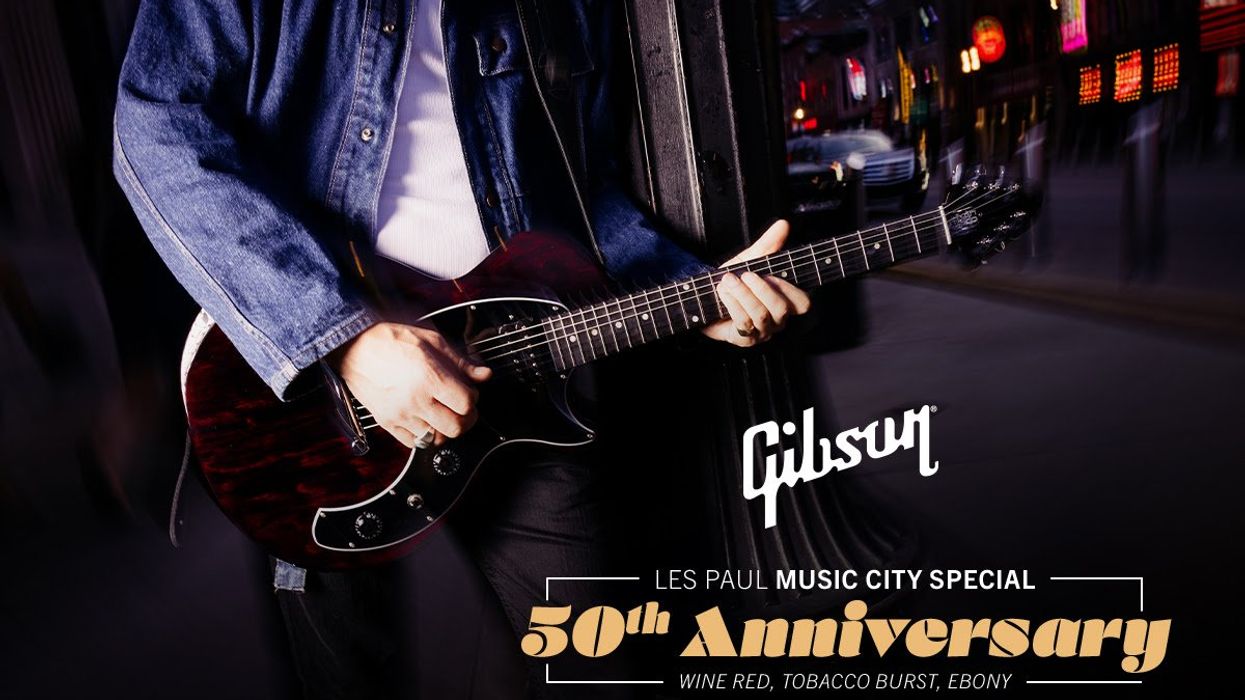
For 50 years, Gibson has been proud to call Nashville home, shaping sound, supporting the artists who make our community special, and crafting the guitars that have defined generations of music. Now, we’re honoring that legacy with something new. Introducing the Les Paul Music City Special – 50th Anniversary, a tribute to where we’ve been and a celebration of where the music will lead next.
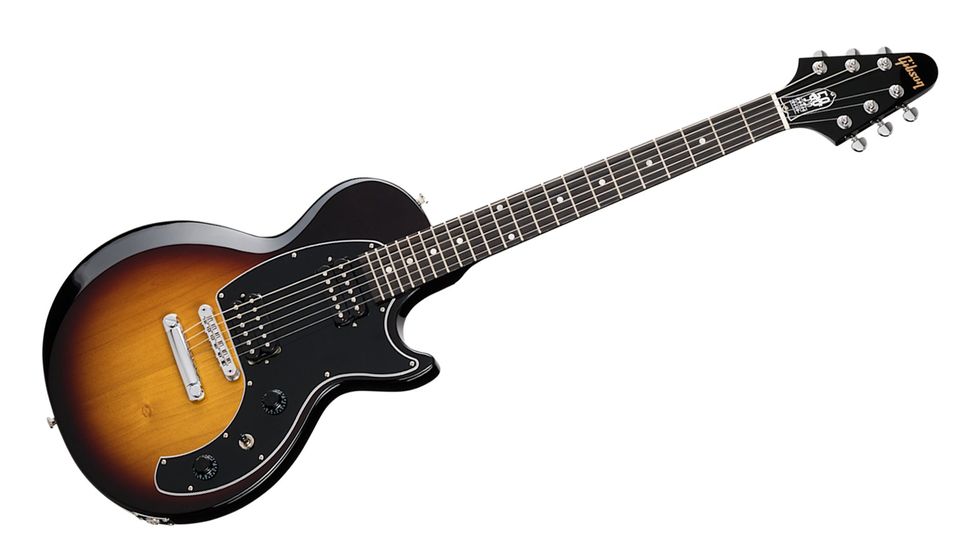
The Music City Special – 50th Anniversary is an updated, modern twist on two historical Gibson models, taking much of its inspiration from the 70s-era Marauder, with a touch of the Music City Junior in its DNA. Over the years, the Marauder has been used by artists from Adam Jones to Paul Stanley. This unique commemorative model pays tribute to the early days of Gibson’s Nashville production and celebrates Gibson’s 50 years of producing world-class guitars in Music City while delivering outstanding value to modern players.
Key Features- Lightweight, Contoured Poplar Body
- Maple Neck with SlimTaper Profile
- Striped Ebony Fretboard with 12" Radius, Acrylic Dot Inlays, and 22 Medium Jumbo Frets
- Grover Mini Rotomatic Tuners
- 70s Tribute Humbucker Pickups
- Soft Shell Case Included
Gibson Les Paul Music City Special 50th Anniversary Electric Guitar - Tobacco Burst
LP Music City Special 50th Anni, Tobacco Burst
Bonnie Raitt Sneaks Up On You | 100 Guitarists Podcast
When it comes to queen of slide guitar Bonnie Raitt, we’ve got something to talk about. On her rootsy first albums—Bonnie Raitt, Give It Up, and Takin’ My Time—she set a bluesy vibe, but covers like Talking Heads’ “Burning Down the House” and Del Shannon’s “Runaway” showed she had more to say. By the late ’80s, she was a pop radio superstar.
So if you’re looking for Raitt’s best guitar tracks and records, we can get you started and give you a few deep cuts along the way.
Rocky Mountain Slide Company:
rockymountainslides.com